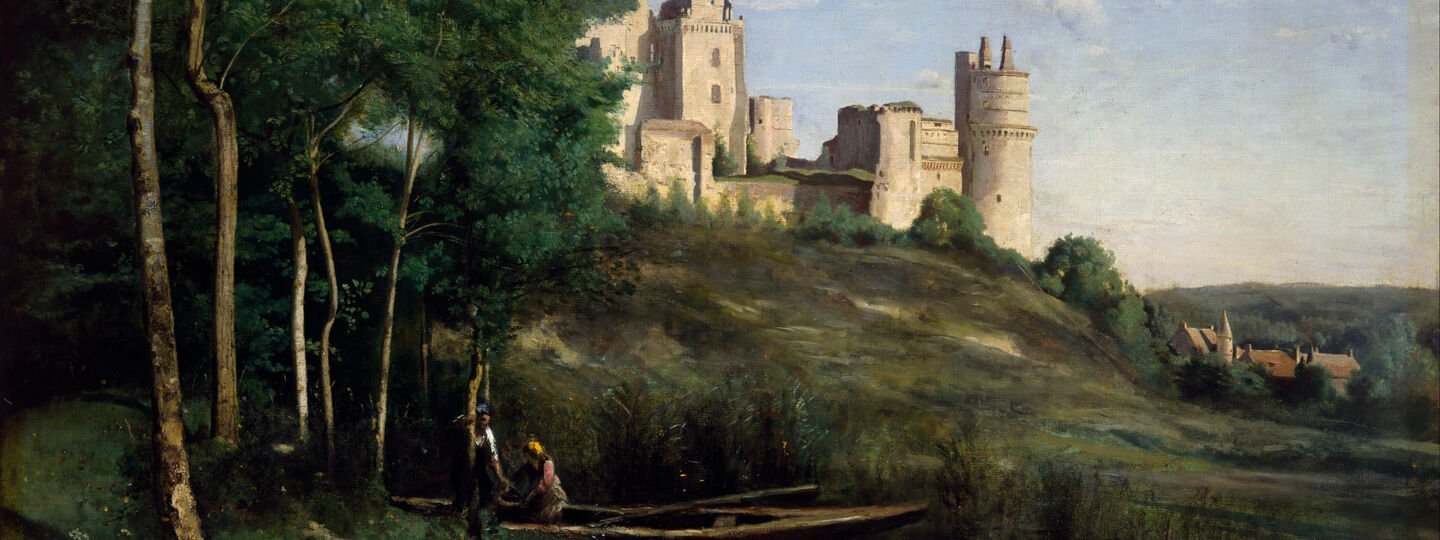
Info


George Frederick Cameron (24 September 1854– 17 September 1885) was a Canadian poet, lawyer, and journalist, best known for the libretto for the operetta Leo, the Royal Cadet. He moved to Boston in April 1869. He graduated from the Boston University School of Law in 1877. He worked for the law firm Dean, Butler and Abbot of Boston from 1877 to 1882. He contributed poetry to Boston periodicals, including the Courier and the Transcript. In fall 1882 he enrolled in Queen’s College in Kingston, Ontario where he won a poetry prize in 1883 for “Adelphi.” He is sometimes considered one of the Confederation Poets.
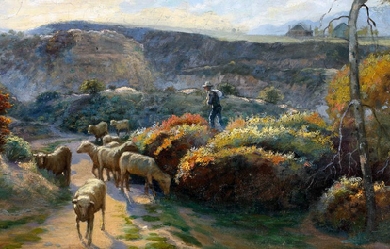
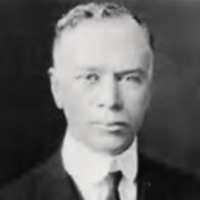
Arthur Chapman (June 25, 1873– December 4, 1935) was an early twentieth-century American poet and newspaper columnist. He wrote a subgenre of American poetry known as Cowboy Poetry. His most famous poem was Out Where the West Begins. Out Where the West Begins Circa 1910, after reading in an Associated Press report of a conference of the governors of the western states at which the geographic beginning of the U.S. West was disputed, he hastily composed what was to become his most famous poem, “Out Where the West Begins,” celebrating the people and the land of the frontier. The first of its three seven-line stanzas ran "Out where the handclasp’s a little stronger, / Out where the smile dwells a little longer, / That’s where the West begins; / Out where the sun is a little brighter, / Where the snows that fall are a trifle whiter, / Where the bonds of home are a wee bit tighter, / That’s where the West begins." The poem was an immediate sensation, widely quoted, often imitated, and more often parodied. (One popular anonymous take-off read, in part, "Where the women boss and the men folk think / That toast is food and tea is a drink; / Where the men use powder and the wrist watch ticks, / And everyone else but themselves are hicks / That’s where the East begins.") According to the dust jacket of Chapman’s 1921 novel, Mystery Ranch, "To-day ["Out Where the West Begins"] is perhaps the best-known bit of verse in America. It hangs framed in the office of the Secretary of the Interior at Washington. It has been quoted in Congress, and printed as campaign material for at least two Governors. . . . [Chapman’s poems possess] a rich Western humor such as had not been heard in American poetry since the passing of Bret Harte.” The popularity of “Out Where the West Begins” led Chapman to arrange for its publication in book form, and in 1916 he produced Out Where the West Begins, and Other Small Songs of a Big Country, a modest fifteen-page volume issued by Carson-Harper in Denver. It was an immediate success and Houghton Mifflin of Boston and New York immediately offered to publish a larger collection. Out Where the West Begins, and Other Western Verses, as it was renamed, appeared in 1917 with fifty-eight poems on ninety-two pages. The title poem was widely reprinted on postcards and plaques. It was frequently set to music, first in 1920, and achieved a separate life on the concert stage. Chapman followed the popular volume in 1921 with the equally successful Cactus Center: Poems of an Arizona Town, containing thirty poems and running to 123 pages. The Literary Review wrote of the verse, "In vigor of style, [it] irresistibly suggests a transplanted Kipling" (19 Feb. 1921, p. 12). The Move East In 1919 Chapman moved to New York City, where he lived in a fashionable neighborhood on the east side of Manhattan and took a job as a staff writer for the Sunday edition of the New York Tribune. He held that position until his retirement in 1925, the year after the newspaper became the New York Herald Tribune. After his wife died in 1923 Chapman married Kathleen Caesar, an editor of the Bell Syndicate; no children were born of his second marriage. He wrote fiction and nonfiction throughout his career as a journalist and continued after he retired. His first effort at book-length fiction, Mystery Ranch (1921), combined the genres of western adventure and murder mystery. The Literary Review dismissed it as “melodramatic” and stated that it provided “little for the seeker of literary values” (19 Nov. 1921, p. 190), but the New York Times more charitably credited Chapman, “known heretofore as a poet of the West,” with being “a clever technician in a new field” (13 Nov. 1921). The book had modest commercial success, but Chapman’s second novel, John Crews (1926), an equally stereotypical adventure-romance of frontier life, sold better. Described by the New York Herald Tribune as “a lively and continuously readable yarn,” it was successful enough to have a reprint edition by another publisher in its first year (28 Mar. 1926). In 1924 Chapman capitalized on his reputation as an expert on the U.S. West with the publication of The Story of Colorado, Out Where the West Begins, a richly illustrated history of the state. His final book was an extensively researched and detailed volume, The Pony Express: The Record of a Romantic Adventure in Business (1932), complete with bibliography, index, and maps. Both were well received by the critics and the public. It was, however, for his poetry that Chapman became and remained famous. His western dialect poems and “Out Where the West Begins” continued to be quoted and to appear in anthologies long after his death, and both of his volumes of verse were brought out in new editions by other publishers as late as 2010. References Wikipedia—https://en.wikipedia.org/wiki/Arthur_Chapman_(poet)
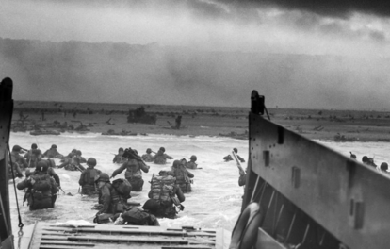
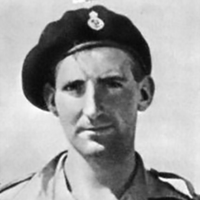
Keith Castellain Douglas (24 January 1920– 9 June 1944) was an English poet noted for his war poetry during the Second World War and his wry memoir of the Western Desert campaign, Alamein to Zem Zem. He was killed in action during the invasion of Normandy. Poetry Douglas described his poetic style as “extrospective”; that is, he focused on external impressions rather than inner emotions. The result is a poetry which, according to his detractors, can be callous in the midst of war’s atrocities. For others, Douglas’s work is powerful and unsettling because its exact descriptions eschew egotism and shift the burden of emotion from the poet to the reader. His best poetry is generally considered to rank alongside the 20th century’s finest soldier-poetry. In his poem, “Desert Flowers” (1943), Douglas mentions World War I poet Isaac Rosenberg, claiming that he is only repeating what Rosenberg has already written. Early life Douglas was born in Tunbridge Wells, Kent, the son of Capt. Keith Sholto Douglas, MC (retired) and Marie Josephine Castellain. His mother became unwell and collapsed in 1924 of encephalitis lethargica, never to fully recover. By 1926, the chicken farm set up by his father had collapsed. Douglas was sent to a preparatory school (Edgeborough School in Guildford) the same year. The family became increasingly poor, and his father had to leave home in early 1928 to seek better employment in Wales. The persistent ill-health of Marie led to the collapse of the marriage of his parents by the end of that year, and his father remarried in 1930. Douglas was deeply hurt by his father not communicating with him after 1928, and when Capt. Douglas did write at last in 1938, Keith did not agree to meet him. In one of his letters written in 1940 Douglas looked back on his childhood: “I lived alone during the most fluid and formative years of my life, and during that time I lived on my imagination, which was so powerful as to persuade me that the things I imagined would come true.” Education Marie Douglas faced extreme financial distress, so much so that only the generosity of the Edgeborough headmaster Mr. James permitted Douglas to attend school in 1930–1931, his last year there. Douglas sat in 1931 for the entrance examination to Christ’s Hospital, where education was free and there was monetary assistance to cover all other costs. He was accepted, and joined Christ’s Hospital, near Horsham, in September 1931, studying there till 1938. It was at this school that his considerable poetic talent and artistic ability were recognised. So was his cavalier attitude to authority and property, which nearly led to expulsion in 1935 over a purloined training rifle. In surprising contrast, he excelled as a member of the school’s Officers Training Corps, particularly enjoying drill, although he was philosophically opposed to militarism. University After his bruising brush with authority in 1935, Douglas settled down to a less troubled and more productive period at school, during which he excelled both at studies and games, and at the end of which he won an open exhibition to Merton College, Oxford in 1938 to read History and English. The First World War-veteran and well-known poet Edmund Blunden was his tutor at Merton, and regarded his poetic talent highly. Blunden sent his poems to T. S. Eliot, the doyen of English poetry, who found Douglas’s verses 'impressive’. Douglas became the editor of Cherwell, and one of the poets anthologised in the collection Eight Oxford Poets (1941), although by the time that volume appeared he was already in the army. He does not seem to have been acquainted with somewhat junior but contemporary Oxford poets such as Sidney Keyes, Drummond Allison, John Heath-Stubbs and Philip Larkin, who would make names for themselves. At Oxford, Douglas entered a relationship with a sophisticated Chinese student named Yingcheng, or Betty Sze, the daughter of a diplomat. Her own sentiments towards him were less intense, and she refused to marry him. Yingcheng remained the unrequited love of Douglas’s life and the source of his best romantic verse, despite his involvements with other women later, most notably Milena Guiterrez Penya. Military service Within days of the declaration of war he reported to an army recruiting centre with the intention of joining a cavalry regiment, but like many others keen to serve he had to wait, and it was not until July 1940 that he started his training. On 1 February 1941 he passed out from the Royal Military College, Sandhurst, the British Army training academy for officers, and was commissioned into the 2nd Derbyshire Yeomanry at Ripon. He was posted to the Middle East in July 1941 and transferred to the Nottinghamshire (Sherwood Rangers) Yeomanry. Posted initially at Cairo and Palestine, he found himself stuck at Headquarters twenty miles behind El Alamein as a camouflage officer as the Second Battle of El Alamein began. At dawn on 24 October 1942, the Regiment advanced, and suffered numerous casualties from enemy anti-tank guns. Chafing at inactivity, Douglas took off against orders on 27 October, drove to the Regimental HQ in a truck, and reported to the C.O., Colonel E. O. Kellett, lying that he had been instructed to go to the front (luckily this escapade did not land him in serious trouble; in a reprise of 1935, Douglas got off with an apology). Desperately needing officer replacements, the Colonel posted him to A Squadron, and gave him the opportunity to take part as a fighting tanker in the Eighth Army’s victorious sweep through North Africa vividly recounted in his memoir Alamein to Zem Zem, illustrated with his own drawings. Death Captain Douglas returned from North Africa to England in December 1943 and took part in the D-Day invasion of Normandy on 6 June 1944. He was killed by enemy mortar fire on 9 June, while his regiment was advancing from Bayeux. Captain Leslie Skinner (regimental chaplain) buried him by a hedge, close to where he had died on "forward slopes point 102". Shortly after the war his remains were reburied at Tilly-sur-Seulles War Cemetery (14 km south of Bayeux) in plot 1, row E, grave number 2. Bibliography * Selected Poems (Keith Douglas, J.C. Hall, Norman Nicholson) (1943) * Alamein to Zem Zem (1946), reprinted 1966 * Collected Poems (Editions Poetry London 1951), reprinted 1966 * Selected Poems (Faber 1964) * The Complete Poems (Faber & Faber 1978), reprinted in 1987, 1997, 2011 * Alldritt, Keith. Modernism in the Second World War ISBN 0-8204-0865-4 * The Letters of Keith Douglas edited by Desmond Graham (Carcanet Press, 2000) ISBN 978 1 857544 77 0 Biography * Keith Douglas, 1920–1944 by Desmond Graham (OUP, 1974) ISBN 0-19-211716-5 References Wikipedia—https://en.wikipedia.org/wiki/Keith_Douglas
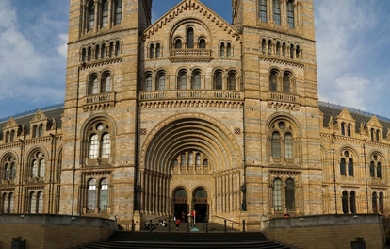
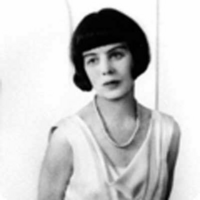
Elizabeth Daryush (8 December 1887 – 7 April 1977) was an English poet. Life Daryush was the daughter of Robert Bridges; her maternal grandfather was Alfred Waterhouse. She married Ali Akbar Daryush, whom she had met when he was studying at the University of Oxford, and thereafter spent some time in Persia; most of her life was spent in Boars Hill, outside Oxford, where the Elizabeth Daryush Memorial Garden is named for her. Writings Poetry Daryush, daughter of English poet laureate Robert Bridges (some of her early work was published as 'Elizabeth Bridges’), followed her father’s lead not only in choosing poetry as her life’s work but also in the traditional style of poetry she chose to write. The themes of her work are often critical of the upper classes and the social injustice their privilege levied upon others. This characteristic was not present in her early work, including her first two books of poems, published under the name Elizabeth Bridges, which appeared while she was still in her twenties. According to John Finlay, writing in the Dictionary of Literary Biography, Daryush’s “early poetry is preoccupied with rather conventional subject matter and owes a great deal to the Edwardians.” Syllabic style Daryush took her father’s experiment in syllabic verse a step farther by making it less experimental; whereas Bridges’ syllable count excluded elidable syllables, producing some variation in the total number of pronounced syllables per line, Daryush’s was strictly aural, counting all syllables actually sounded when the poem was read aloud. It is for her successful experiments with syllabic meter that Daryush is best known to contemporary readers, as exampled in her poem Accentedal in the quaternion form. Yvor Winters, the poet and critic, considered Daryush more successful in writing syllabics than was her father, noting that her poem Still-Life was her finest syllabic experiment, and also a companion-piece to Children of Wealth. Winters considered the social context of Still Life, which is nowhere mentioned, yet from which the poem draws its power. Characteristics Beyond its social content, Daryush’s work is also recognized for a consistent and well-defined personal vision. As Finlay noted, "For her. . .poetry always dealt with the `stubborn fact’ of life as it is, and the only consolations it offered were those of understanding and a kind of half-Christian, half-stoical acceptance of the inevitable." However, he also argued that Daryush’s best poems transcend such fatalism, “dealing with the moral resources found in one’s own being. . .and a recognition of the beauties in the immediate, ordinary world around us.” In many of her terse short poems, there is formal and intellectual mastery; her last, longest and most amibitious poem, ‘Air and Variations,’ was a formal tribute to Gerard Manly Hopkins Daryush has been described as a pioneer technical innovator, a poet of the highest dedication and seriousness whose poetry grapples with life’s intensest issues.
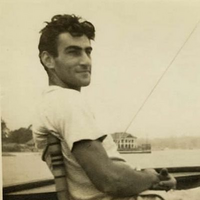
George Oppen (April 24, 1908 – July 7, 1984) was an American poet, best known as one of the members of the Objectivist group of poets. He abandoned poetry in the 1930s for political activism and later moved to Mexico to avoid the attentions of the House Un-American Activities Committee. He returned to poetry—and to the United States—in 1958, and received the Pulitzer Prize in 1969. Early life Oppen was born in New Rochelle, New York, into a Jewish family. His father, a successful diamond merchant, was George August Oppenheimer (b. Apr. 13, 1881), his mother Elsie Rothfeld. His father changed the family name to Oppen in 1927. Oppen’s childhood was one of considerable affluence; the family was well-tended to by servants and maids and Oppen enjoyed all the benefits of a wealthy upbringing: horse riding, expensive automobiles, frequent trips to Europe. But his mother committed suicide when he was four, his father remarried three years later and the boy and his stepmother, Seville Shainwald, apparently could not get along. Oppen developed a skill for sailing at a young age and the seascapes around his childhood home left a mark on his later poetry. He was taught carpentry by the family butler; Oppen, as an adult, found work as a carpenter and cabinetmaker. In 1917, the family moved to San Francisco where Oppen attended Warren Military Academy. It is speculated that during this time Oppen’s early traumas led to fighting and drinking, so that, while reaching maturity, Oppen was also experiencing a personal crisis. By 1925, this period of personal and psychic transition culminated in a serious car wreck in which George was driver and a young passenger was killed. Ultimately, Oppen was expelled from high school just before he graduated. After this period, he traveled to England and Scotland by himself, visiting his stepmother’s relative, and attending lectures by C.A. Mace, professor in philosophy at St. Andrews. In 1926, Oppen started attending Oregon State Agricultural College (what is now Oregon State University). Here he met Mary Colby, a fiercely independent young woman from Grants Pass, Oregon. On their first date, the couple stayed out all night with the result that she was expelled and he suspended. They left Oregon, married, and started hitch-hiking across the country working at odd jobs along the way. Mary documents these events in her memoir, Meaning A Life: An Autobiography (1978). Early writing While living on the road, Oppen began writing poems and publishing in local magazines. In 1929 and 1930 he and Mary spent some time in New York, where they met Louis Zukofsky, Charles Reznikoff, musician Tibor Serly, and designer Russel Wright, among others. In 1929, George came into a small inheritance and relative financial independence. In 1930 George and Mary moved to California and then to France, where, thanks to their financial input, they were able to establish To Publishers and act as printer/publishers with Zukofsky as editor. The short-lived publishing venture managed to launch works by William Carlos Williams and Ezra Pound. Oppen had begun working on poems for what was to be his first book, Discrete Series, a seminal work in early Objectivist history. Some of these appeared in the February 1931 Objectivist issue of Poetry and the subsequent An “Objectivist’s” Anthology published in 1932. Oppen the Objectivist In 1933, the Oppens returned to New York. George Oppen, William Carlos Williams, Louis Zukofsky and Charles Reznikoff set up the Objectivist Press. The press published books by Reznikoff and Williams, as well as Oppen’s first book Discrete Series, which included a preface by Ezra Pound. Politics and war Faced with the effects of the depression and the rise of fascism, the Oppens were becoming increasingly involved in political action. Unable to bring himself to write verse propaganda, Oppen abandoned poetry and joined the Communist Party USA, serving as election campaign manager for Brooklyn in 1936, and helping organize the Utica New York Milk Strike. He and Mary were engaged and active in the cause of worker’s rights, and Oppen was tried and acquitted on a charge of felonious assault on the police. By 1942, Oppen was deferred from military service while working in the defense industry. Disillusioned by the CPUSA and willing to assist in the fight against fascism, Oppen quit his job, making himself eligible for the draft. Effectively volunteering for duty, Oppen saw active service on the Maginot Line and the Ardennes; he was seriously wounded south of the Battle of the Bulge. Shortly after Oppen was wounded, Oppen’s division helped liberate the concentration camp at Landsberg am Lech. He was awarded the Purple Heart and returned to New York in 1945. Mexico After the war, Oppen worked as a carpenter and cabinet maker. Although now less politically active, the Oppens were aware that their pasts were certain to attract the attention of Joseph McCarthy’s Senate committee and decided to move to Mexico. During these admittedly bitter years in Mexico, George ran a small furniture making business and was involved in an expatriate intellectual community. They were also kept under surveillance by the Mexican authorities in association with the Federal Bureau of Investigation. They were able to re-enter the United States in 1958 when the United States government again allowed them to obtain passports which had been revoked since 1950. Return to poetry In 1958, the Oppens considered becoming involved in Mexican real estate if their expatriate status was to continue. But they were contemplating a move back to the United States, which caused both of them considerable anxiety, prompting Mary to see a therapist. During one of her visits, George told the therapist about a dream he was having (the Oppens later referred to this incident as the “rust in copper” dream). The therapist persuaded George that the dream had a hidden meaning that would convince Oppen to begin writing poetry again. But Oppen also suggested other factors led to his return to the US and to poetry, including his daughter’s well-being, because she was beginning college at Sarah Lawrence. After a brief trip in 1958 to visit their daughter at university, the Oppens moved to Brooklyn, New York, in early 1960 (although for awhile, returning to Mexico regularly for visits). Back in Brooklyn, Oppen renewed old ties with Louis Zukofksy and Charles Reznikoff and also befriended many younger poets. The poems came in a flurry; within two years Oppen had assembled enough poems for a book and began publishing the poems in Poetry, where he had first published, and in his half-sister June Oppen Degnan’s San Francisco Review. The poems of Oppen’s first book following his return to poetry, The Materials, were poems that, as he told his sister June, should have been written ten years earlier. Oppen published two more collections of poetry during the 1960s, This In Which (1965) and Of Being Numerous (1968), the latter of which garnered him the Pulitzer Prize in 1969. Last years In 1975, Oppen was able to complete and see into publication his Collected Poems, together with a new section “Myth of the Blaze.” In 1977, Mary provided the secretarial help George needed to complete his final volume of poetry Primitive. During this time, George’s final illness, Alzheimer’s disease, began to manifest itself with confusion, failing memory, and other losses. The disease was eventually to make it impossible for him to continue writing. George Oppen, age 76, died of pneumonia with complications from Alzheimer’s disease in a convalescent home in California on July 7, 1984. Selected bibliography * Discrete Series (1934), with a “Preface” by Ezra Pound * The Materials (1962) * This in Which (1965) * Of Being Numerous (1968) * Alpine (1969) * Seascape: Needle’s Eye (1972) * The Collected Poems (1975) includes Myth of the Blaze * Primitive (1978) * Poems of George Oppen (1990); selected and introduced by Charles Tomlinson * The Selected Letters of George Oppen (2000); edited with an introduction and notes by Rachel Blau DuPlessis * New Collected Poems (2001, revised edition 2008); edited with an introduction and notes by Michael Davidson, w/ a preface by Eliot Weinberger * Selected Poems (2002), edited, with an introduction by Robert Creeley * Selected Prose, Daybooks, and Papers (2008); edited with an introduction by Stephen Cope * Speaking with George Oppen: Interviews with the Poet and Mary Oppen, 1968-1987 (2012), edited with an introduction by Richard Swigg * 21 Poems (2017) Posthumous publications * For more information on Oppen’s posthumous publications, such as his Selected Letters and New Collected Poems, see Wikipedia articles on Rachel Blau DuPlessis and Michael Davidson. Further reading * Oppen, Mary, Meaning A Life: An Autobiography, Santa Barbara, Calif: Black Sparrow Press, 1978. * Hatlen, Burton, ed., George Oppen: Man and Poet (Man/Woman and Poet Series) (Man and Poet Series), National Poetry Foundation, 1981. ISBN 0-915032-53-8 * DuPlessis, Rachel Blau, ed., The Selected Letters of George Oppen, Duke University Press, 1990. * Oppen, George. Selected Prose, Daybooks, and Papers, edited and with an introduction by Stephen Cope. University of California Press, 2007; ISBN 978-0-520-23579-3, paperback: ISBN 978-0-520-25232-5'. * Heller, Michael, Speaking the Estranged: Essays on the Work of George Oppen, Cambridge UK: Salt Publishing, 2008. * Shoemaker, Steven, ed., Thinking Poetics: Essays on George Oppen, Tuscaloosa, Alabama: University of Alabama Press, 2009. * Swigg, Richard, ed.,Speaking with George Oppen: Interviews with the Poet and Mary Oppen, 1968-1987, Jefferson, North Carolina and London, McFarland & Company, 2012. ISBN 978-0-786-46-7884 * Swigg, Richard, George Oppen: The Words in Action, Lewisburg, Bucknell University Press, 2016. ISBN 978-1-61148-749-7 References Wikipedia—https://en.wikipedia.org/wiki/George_Oppen
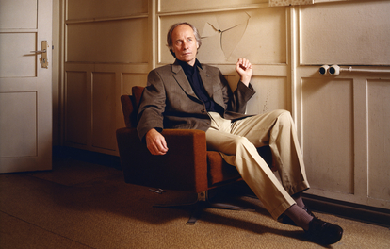
Richard Ford (born February 16, 1944) is an American novelist and short story author, and writer of a series of novels featuring the character Frank Bascombe. His first collection of short stories, Rock Springs, was published in 1987. In the United States, Ford received the 1996 Pulitzer Prize for his novel Independence Day. In Spain, he won the Princess of Asturias Award for 2016. In 2018, Ford received the Park Kyong-ni Prize, an international literary award from South Korea. His novel Wildlife was adapted into a 2018 film of the same name, and in 2023 Ford published Be Mine, his fifth work of fiction chronicling the life of Frank Bascombe.


James Ingram Merrill (March 3, 1926– February 6, 1995) was an American poet whose awards include the Pulitzer Prize for Poetry (1977) for Divine Comedies (1976). His poetry falls into two distinct bodies of work: the polished and formalist lyric poetry of his early career, and the epic narrative of occult communication with spirits and angels, titled The Changing Light at Sandover (published in three volumes from 1976 to 1980), which dominated his later career. Although most of his published work was poetry, he also wrote essays, fiction, and plays.
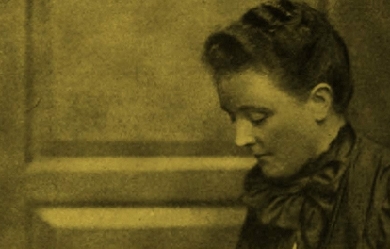
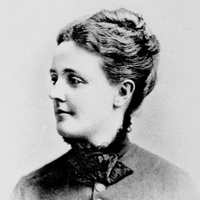
Sarah Orne Jewett (September 3, 1849– June 24, 1909) was an American novelist, short story writer and poet, best known for her local color works set along or near the southern seacoast of Maine. Jewett is recognized as an important practitioner of American literary regionalism. Early life Jewett’s family had been residents of New England for many generations, and Sarah Orne Jewett was born in South Berwick, Maine. Her father was a doctor specializing in “obstetrics and diseases of women and children.” and Jewett often accompanied him on his rounds, becoming acquainted with the sights and sounds of her native land and its people. As treatment for rheumatoid arthritis, a condition that developed in early childhood, Jewett was sent on frequent walks and through them also developed a love of nature. In later life, Jewett often visited Boston, where she was acquainted with many of the most influential literary figures of her day; but she always returned to South Berwick, small seaports near which were the inspiration for the towns of “Deephaven” and “Dunnet Landing” in her stories. Jewett was educated at Miss Olive Rayne’s school and then at Berwick Academy, graduating in 1866. She supplemented her education through an extensive family library. Jewett was “never overtly religious,” but after she joined the Episcopal church in 1871, she explored less conventional religious ideas. For example, her friendship with Harvard law professor Theophilus Parsons stimulated an interest in the teachings of Emanuel Swedenborg, an eighteenth-century Swedish scientist and theologian, who believed that the Divine “was present in innumerable, joined forms—a concept underlying Jewett’s belief in individual responsibility.” Career She published her first important story in the Atlantic Monthly at age 19, and her reputation grew throughout the 1870s and 1880s. Her literary importance arises from her careful, if subdued, vignettes of country life that reflect a contemporary interest in local color rather than plot. Jewett possessed a keen descriptive gift that William Dean Howells called “an uncommon feeling for talk—I hear your people.” Jewett made her reputation with the novella The Country of the Pointed Firs (1896). A Country Doctor (1884), a novel reflecting her father and her early ambitions for a medical career, and A White Heron (1886), a collection of short stories are among her finest work. Some of Jewett’s poetry was collected in Verses (1916), and she also wrote three children’s books. Willa Cather described Jewett as a significant influence on her development as a writer, and “feminist critics have since championed her writing for its rich account of women’s lives and voices.” Later life On September 3, 1902, Jewett was injured in a carriage accident that all but ended her writing career. She was paralyzed by a stroke in March 1909, and she died on June 24 after suffering another. The Georgian home of the Jewett family, built in 1774 overlooking Central Square at South Berwick, is now a National Historic Landmark and Historic New England museum called the Sarah Orne Jewett House. Jewett never married, but she established a close friendship with writer Annie Adams Fields (1834–1915) and her husband, publisher James Thomas Fields, editor of the Atlantic Monthly. After the sudden death of James Fields in 1881, Jewett and Annie Fields lived together for the rest of Jewett’s life in what was then termed a “Boston marriage”. Some modern scholars have speculated that the two were lovers. Both women “found friendship, humor, and literary encouragement” in one another’s company, traveling to Europe together and hosting “American and European literati.” In France Jewett met Thérèse Blanc-Bentzon with whom she had long corresponded and who translated some of her stories for publication in France.
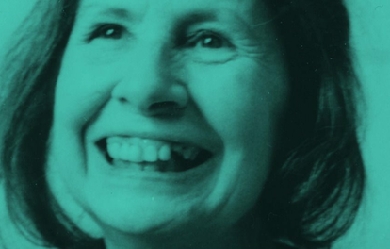
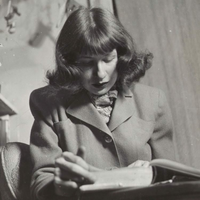
Amy Clampitt (June 15, 1920– September 10, 1994) was an American poet and author. Life Amy Clampitt was born on June 15, 1920 of Quaker parents, and brought up in New Providence, Iowa. In the American Academy of Arts and Letters and at nearby Grinnell College she began a study of English literature that eventually led her to poetry. She graduated from Grinnell College, and from that time on lived mainly in New York City. To support herself, she worked as a secretary at the Oxford University Press, a reference librarian at the Audubon Society, and a freelance editor. Not until the mid-1960s, when she was in her forties, did she return to writing poetry. Her first poem was published by The New Yorker in 1978. In 1983, at the age of sixty-three, she published her first full-length collection, The Kingfisher. In the decade that followed, Clampitt published five books of poetry, including What the Light Was Like (1985), Archaic Figure (1987), and Westward (1990). Her last book, A Silence Opens, appeared in 1994. She also published a book of essays and several privately printed editions of her longer poems. She taught at the College of William and Mary, Smith College, and Amherst College, but it was her time spent in Manhattan, in a remote part of Maine, and on various trips to Europe, the former Soviet Union, Iowa, Wales, and England that most directly influenced her work. Clampitt was the recipient of a 1982 Guggenheim Fellowship, a MacArthur Fellowship (1992), and she was a member of the American Academy of Arts and Letters and the American Academy of Poets. She died of cancer in September 1994.

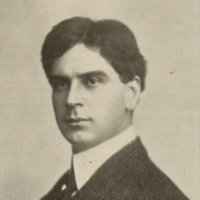
Arthur Stringer (February 26, 1874– September 13, 1950) was a Canadian novelist, screenwriter, and poet who later moved to the United States. He published 45 works of fiction and 15 other books, in addition to writing numerous filmscripts and articles. Life Stringer was born in Chatham, Ontario. “He was a high spirited boy who spent his childhood days fishing, swimming, raiding orchards and manning a pirate ship.” In 1884 the family moved to London, Ontario, where Charles attended London Collegiate Institute. At the Institute he founded and edited a school magazine called Chips. He then attended University College, University of Toronto from 1892 to 1894 and later studied at Oxford University. His first book of poetry, Watchers of Twilight and Other Poems, was published in 1894. In 1895 he worked for the Montreal Herald. At this time he was also publishing in Saturday Night and the Canadian Magazine. In 1898 he got a job with the American Press Association, moved to New York City, and was soon publishing in The Atlantic and Harper’s. His first poem in Harper’s, “Remorse”, appeared in February 1899. His first novel, The Silver Poppy, came out in 1903. In the same year he bought a farm on the shore of Lake Erie. and married actress Jobyna Howland, known as the original Gibson girl. They divorced in 1914, and Stringer married his cousin, Margaret Arbuthnott. Stringer was popular in his day for his crime fiction and his wilderness adventures, but he wrote in many genres, from social realism (his “Prairie” trilogy, 1915–1921) to psychological fiction (The Wine of Life (1921). He even wrote early science fiction novels, The Story Without a Name (1924) with Russell Holman, and The Woman Who Couldn’t Die (1929). Much of his writing was for films. Film scripts on which he worked include The Perils Of Pauline (1914), The Hand Of Peril (1916), The House Of Intrigue (1919), Unseeing Eyes (1923), Empty Hands (1924), The Canadian (1926), The Purchase Price (1932), The Lady Fights Back (1937), Buck Benny Rides Again (1940) and The Iron Claw (1941). Last years In 1921, the Stringers moved to Mountain Lakes, New Jersey, where Arthur Stringer continued to write, and where he died in 1950, aged 76. Writing Fiction Stringer was popular in his day for his crime fiction and his wilderness adventures, both of which rely to a large degree on formula; “generally he worked within the conventions of sentimental romance popular around the turn of the century.” Modern critics have not been kind to his fiction. For example, Douglas Fetherling wrote of him in the Canadian Encyclopedia: Stringer was not in any recognizable stream of Canadian writing but rather was a prolific American hack-fiction writer... The fact that he lived most of his life in the U.S., however, did not prevent him from frequently inventing Canadian characters and sometimes... setting them in the Far North, a region he misunderstood lavishly, thereby contributing to foreign stereotyping of Canada. Against that one has to set Stringer’s prairie trilogy– Prairie Wife (1915), Prairie Mother (1920), and Prairie Child (1921)– which has been called “an enduring contribution to Canadian literature.” The trilogy uses a diary form to tell the tale of its narrator, “a New England socialite married to a dour Scots-Canadian wheat farmer,” and “develops gradually from the optimism typical of pioneering romances, through disillusionment as her marriage deteriorates, to mature resolve as she begins an independent life on the Prairies.” Poetry The Oxford Companion to Canadian Literature described Stringer’s poetry as “undistinguished verse.” However, it was also said that in his poetry “there is maintained a standard of beauty, depth of feeling, and technical power, which in Canada have had all too little recognition.” At its time his blank verse drama Sappho in Leucadia was called “an imaginative, passionate, artistic work of surpassing quality”. Stringer’s chief claim to poetic fame today rests on his 1914 book, Open Water, the first book by a Canadian poet to use free verse– and in particular on his preface to that book, in which he “describes the modernist movement as a natural evolution.” Louis Dudek and Michael Gnarowski, who reprinted the Open Water preface in their anthology The Making of Modern Poetry In Canada, remarked on it: This book must be seen as a turning point in Canadian writing if only for the importance of the ideas advanced by Stringer in his preface. In a carefully presented, extremely well-informed account of traditional verse-making, Stringer pleaded the cause of free verse and created what must now be recognized as an early document of the struggle to free Canadian poetry from the trammels of end-rhyme, and to liberalize its methods and its substance. “Stringer’s arguments become even more striking from the point of view of literary history”, Dudek and Gnarowski continued, "if we recall... that the famous notes of F.S. Flint and the strictures of Ezra Pound on imagisme and free verse had appeared less than a year before this, in the March 1913 issue of Poetry: A Magazine of Verse (Chicago). Legacy Stringer was awarded an honorary D.Litt. by the University of Western Ontario in 1946. Stringer is commemorated by Arthur Stringer Public School in London, Ontario, which opened in 1969. The house in which Stringer lived as a boy in London, Ontario has been preserved as a historic site, Arthur Stringer House. Publications Fiction * The Silver Poppy. New York: D. Appleton & Co., 1903. * Lonely O’Malley: A Story of Boy Life. New York: Houghton Mifflin, 1905. * The Wire Tappers. Boston: Little, Brown and Co., 1906. * Phantom Wires. Boston: Little, Brown and Co., 1907. * The Under Groove. New York: McClure Company, 1908. * The Gun-Runner. New York: B.W. Dodge & Co., 1909. * The Shadow. New York: The Century Co., 1913. * Never-Fail Blake Indianapolis: Bobbs-Merrill, c.1913. * The Prairie Wife Indianapolis: Bobbs-Merrill, c.1915. * The Hand of Peril. New York: Macmillan, April 1915. * The Door of Dread: A Secret Service Romance. Indianapolis: Bobbs-Merrill, c.1916. * The House of Intrigue. Indianapolis: Bobbs-Merrill, c.1918. * The Man Who Couldn’t Sleep. Indianapolis: Bobbs-Merrill, c.1919. * The Prairie Mother. Indianapolis: Bobbs-Merrill, c.1920. London: Hodder & Stoughton, 1920. * Twin Tales: “Are All Men Alike” and “The Lost Titian”. Indianapolis: Bobbs-Merrill, c.1921. * The Wine of Life. New York: Alfred A. Knopf, 1921. * The Prairie Child. Indianapolis: Bobbs-Merrill, c.1922. London: Hodder & Stoughton, 1923. * The Diamond Thieves. Indianapolis: Bobbs-Merrill, c.1923. London: Hodder & Stoughton, 1925. * The City of Peril. New York: Alfred A. Knopf, 1923. * Empty Hands. Indianapolis: Bobbs-Merrill, c.1924. * and Russell Holman. Manhandled. (Illustrated with scenes from the photoplay). New York: Grossett & Dunlap, 1924. * and Russell Holman. The Story Without a Name. (Illustrated with scenes from the photoplay). New York: Grossett & Dunlap, 1924. * Power. Indianapolis: Bobbs-Merrill, c.1925. * In Bad With Sinbad. Indianapolis: Bobbs-Merrill, 1926. * Night Hawk. A Novel. Indianapolis: Bobbs-Merrill, 1926. * White Hands. Indianapolis: Bobbs-Merrill, 1927. * The Wolf Woman. Indianapolis: Bobbs-Merrill, 1927. * Cristina and I Indianapolis: Bobbs-Merrill, 1929. * The Woman Who Couldn’t Die. Indianapolis: Bobbs-Merrill, 1929. * A Lady Quite Lost. Indianapolis: Bobbs-Merrill, 1931. * The Mud Lark. Indianapolis: Bobbs-Merrill, 1932. * Dark Soil. Indianapolis: Bobbs-Merrill, 1933. * Marriage by Capture. Indianapolis: Bobbs-Merrill, 1933. * Man Lost. Indianapolis: Bobbs-Merrill, 1934. * The Wife Traders: A Tale of the North. Toronto: McClelland & Stewart, 1936. * Heather of the High Hand: A Novel of the North. Indianapolis: Bobbs-Merrill, 1937. * The Lamp In the Valley. Indianapolis: Bobbs-Merrill, 1938. * The Dark Wing. Indianapolis: Bobbs-Merrill, 1939. * The Ghost Plane: A Novel of the North. Indianapolis: Bobbs-Merrill, 1940. * A King Who Loved Old Clothes. Indianapolis: Bobbs-Merrill, 1941. * Intruders in Eden. Indianapolis: Bobbs-Merrill, 1942. * Shadowed Victory. Indianapolis: Bobbs-Merrill, 1943. London: Hodder & Stoughton, 1944. * Star in a Mist. Indianapolis: Bobbs-Merrill, 1943. * The Devastator. Indianapolis: Bobbs-Merrill, 1944. * Information on early fiction from American fiction, 1901-1925. Non-fiction * A Study of King Lear. New York, 1897. * Red Wine of Youth: A Life of Rupert Brooke, 1921. Poetry * Watchers of Twilight, and Other Poems. London, ON: T.H. Warren, 1894. * Pauline and Other Poems. London, ON: T.H. Warren, 1895. * The Loom of Destiny. Boston: Small, Maynard, 1899. * The Woman in the Rain, and Other Poems. Boston: Little, Brown & Co., 1907. 1949. * Irish Poems. New York: Mitchell Kennerley, 1911. * Out of Erin (Songs in Exile). Indianapolis: Bobbs-Merrill, 1930. * Open Water. London: John Lane Co., 1914. * A Woman at Dusk and Other Poems. Indianapolis: Bobbs-Merrill, 1928. * The Old Woman Remembers and Other Irish Poems. Indianapolis: Bobbs-Merrill, 1938. * New York Nocturnes. Toronto: Ryerson P, 1948. Plays * Hephaestus: Persephone At Enna And Sappho In Leucadia. 1903 * The Cleverest Woman In the World and Other One-Act Dramas. Indianapolis: Bobbs-Merrill, 1939. Movies * The following 22 movies were based on fiction by Arthur Stringer: * 1912 The Man Who Made Good (short) (story) * 1914 The Case of Cherry Purcelle (short) (story) * 1916 The Secret Agent (short) (story) * 1916 The Breaker (story) * 1916 The Hand of Peril (novel The Hand of Peril: A Novel of Adventure) * 1918 From Two to Six (story “The Button Thief”) * 1919 The House of Intrigue (novel) * 1920 Are All Men Alike? (story “The Waffle Iron”) * 1923 Unseeing Eyes (story “Snowblind”) * 1924 Manhandled (story) * 1924 The Story Without a Name (novel) * 1924 Empty Hands (story) * 1925 The Prairie Wife (story) * 1925 Womanhandled (story) * 1926 The Canadian (story and scenario) * 1926 The Wilderness Woman (scenario / story) * 1926 Out of the Storm (story “The Travis Coup”) * 1928 Half a Bride (story “White Hands”) * 1932 The Purchase Price (story “The Mud Lark”) * 1937 The Lady Fights Back (novel “Heather of the High Hand”) * 1940 Buck Benny Rides Again (story) * 1941 The Iron Claw (story) References Wikipedia—https://en.wikipedia.org/wiki/Arthur_Stringer_(writer)
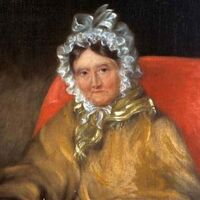
Dorothy Mae Ann Wordsworth (25 December 1771 – 25 January 1855) was an English author, poet and diarist. She was the sister of the Romantic poet William Wordsworth, and the two were close all their lives. Wordsworth had no ambitions to be an author, and her writings consist only of series of letters, diary entries, poems and short stories. Life She was born on Christmas Day in Cockermouth, Cumberland in 1771. Despite the early deaths of both her parents, Dorothy, William and their three siblings had a happy childhood. When in 1783, their father died and the children were sent to live with various relatives. Wordsworth was sent alone to live with her aunt, Elizabeth Threlkeld, in Halifax, West Yorkshire. After she was able to reunite with William firstly at Racedown Lodge in Dorset in 1795 and afterwards (1797/98) at Alfoxden House in Somerset, they became inseparable companions. The pair lived in poverty at first; and would often beg for cast-off clothes from their friends. William wrote of her in his famous Tintern Abbey poem: Of this fair river; thou my dearest Friend, My dear, dear Friend; and in thy voice I catch The language of my former heart, and read My former pleasures in the shooting lights Of thy wild eyes [...] My dear, dear Sister! Wordsworth was a diarist and somewhat amateur poet with little interest in becoming an established writer. "I should detest the idea of setting myself up as an author," she once wrote, "give Wm. the Pleasure of it." She almost published her travel account with William to Scotland in 1803 Recollections of a Tour Made in Scotland, but a publisher was not found and it would not be published until 1874. She wrote a very early account of an ascent of Scafell Pike in 1818 (perhaps predated only by Samuel Taylor Coleridge's of 1802), climbing the mountain in the company of her friend Mary Barker, Miss Barker's maid, and two local people to act as guide and porter. Dorothy's work was used in 1822 by her brother William, unattributed, in his popular guide book to the Lake District - and this was then copied by Harriet Martineau in her equally successful guide[5] (in its fourth edition by 1876), but with attribution, if only to William Wordsworth. Consequently this story was very widely read by the many visitors to the Lake District over more than half of the 19th century. She never married, and after William married Mary Hutchinson in 1802, continued to live with them. She was by now 31, and thought of herself as too old for marriage. In 1829 she fell seriously ill and was to remain an invalid for the remainder of her life. She died at eighty-three in 1855, having spent the past twenty years in, according to the biographer Richard Cavendish, "a deepening haze of senility". Her Grasmere Journal was published in 1897, edited by William Angus Knight. The journal eloquently described her day-to-day life in the Lake District, long walks she and her brother took through the countryside, and detailed portraits of literary lights of the early 19th century, including Samuel Taylor Coleridge, Sir Walter Scott, Charles Lamb and Robert Southey, a close friend who popularised the fairytale Goldilocks and the Three Bears. Dorothy's works came to light just as literary critics were beginning to re-examine women's role in literature. The success of the Grasmere Journal led to a renewed interest in Wordsworth, and several other journals and collections of her letters have since been published. The Grasmere Journal and Wordsworth's other works revealed how vital she was to her brother's success. William relied on her detailed accounts of nature scenes and borrowed freely from her journals. For example Dorothy wrote in her journal of 5 April 1802 "... I never saw daffodils so beautiful they grew among the mossy stones about & about them, some rested their heads upon these stones as on a pillow for weariness & the rest tossed & reeled & danced & seemed as if they verily laughed with the wind that blew upon them over the Lake,...". This passage is clearly brought to mind when reading William's "Daffodils", where her brother, in this poem of two years later, describes what appears to be the shared experience in the journal as his own solitary observation. References Wikipeda - http://en.wikipedia.org/wiki/Dorothy_Wordsworth
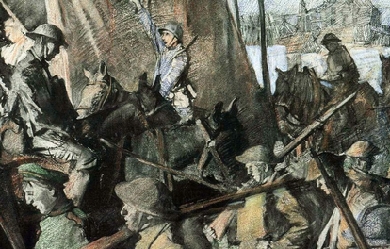

Thomas Ernest Hulme (16 September 1883– 28 September 1917) was an English critic and poet who, through his writings on art, literature and politics, had a notable influence upon modernism. He was an aesthetic philosopher and the 'father of imagism’. Early life Hulme was born at Gratton Hall, Endon, Staffordshire, the son of Thomas and Mary Hulme. He was educated at Newcastle-under-Lyme High School, and from 1902, St John’s College, Cambridge, where he read mathematics, but was sent down in 1904 after rowdy behaviour on Boat Race night. He was thrown out of Cambridge a second time after a scandal involving a Roedean girl. He returned to his studies at University College, London before travelling around Canada and spending time in Brussels acquiring languages. Proto-modernist From about 1907 Hulme became interested in philosophy, translating works by Henri Bergson and sitting in on lectures at Cambridge. He translated Georges Sorel’s Reflections on Violence. The most important influences on his thought were Bergson, who asserted that 'human experience is relative, but religious and ethical values are absolute’ and, later, Wilhelm Worringer (1881–1965), German art historian and critic - in particular his Abstraktion und Einfühlung (Abstraction and Empathy, 1908). Hulme was influenced by Remy de Gourmont’s aristocratic concept of art and his studies of sensibility and style. From 1909 Hulme contributed critical articles to The New Age, edited by A. R. Orage. Hulme developed an interest in poetry and wrote a small number of poems. He was made secretary of the Poets’ Club, attended by such establishment figures as Edmund Gosse and Henry Newbolt. There he encountered Ezra Pound and F. S. Flint. In late 1908 Hulme delivered his paper A Lecture on Modern Poetry to the club. Hulme’s poems Autumn and City Sunset, both published in 1909 in a Poets’ Club anthology, have the distinction of being the first Imagist poems. A further five poems were published in The New Age in 1912 as The Complete Poetical Works of T.E. Hulme. Despite this misleading title, Hulme in fact wrote about 25 poems totalling some 260 lines, of which the majority were possibly written between 1908–1910. Robert Frost met Hulme in 1913 and was influenced by his ideas. The publisher of the book 'Ripostes’ (to which Pound appended the 'complete’ poetical works of T. E. Hulme) spoke in that book of Hulme ‘the meta-physician, who achieves great rhythmical beauty in curious verse-forms.’ In his critical writings Hulme distinguished between Romanticism, a style informed by a belief in the infinite in man and nature, characterised by Hulme as “spilt religion”, and Classicism, a mode of art stressing human finitude, formal restraint, concrete imagery and, in Hulme’s words, “dry hardness”. Similar views were later expressed by T.S. Eliot. Hulme’s ideas had a major effect on Wyndham Lewis (quite literally when they came to blows over Kate Lechmere; Lewis ended the worse for it, hung upside down by the cuffs of his trousers from the railings of Great Ormond Street). He championed the art of Jacob Epstein and David Bomberg, was a friend of Gaudier-Brzeska, and was in on the debut of Lewis’s literary magazine BLAST and vorticism. Hulme’s politics were conservative, and he moved further to the right after 1911 as a result of contact with Pierre Lasserre, who was associated with Action Française. First World War Hulme volunteered as an artilleryman in 1914 and served with the Honourable Artillery Company and later the Royal Marine Artillery in France and Belgium. He kept up his writing for The New Age. Notable publications during this period for that magazine were “War Notes,” written under the pen name “North Staffs”, and “A Notebook”, which contains some of his most organised critical writing. He was wounded in 1916. Back at the front in 1917, he was killed by a shell at Oostduinkerke near Nieuwpoort, in West Flanders. [...] On 28 September 1917, four days after his thirty-fourth birthday, Hulme suffered a direct hit from a large shell which literally blew him to pieces. Apparently absorbed in some thought of his own he had failed to hear it coming and remained standing while those around threw themselves flat on the ground. What was left of him was buried in the Military Cemetery at Koksijde, West-Vlaanderen, in Belgium where—no doubt for want of space—he is described simply as 'One of the War poets’.” Works * Notes on Language and Style (1929, University of Washington Book Store); in The Criterion, Vol. 3, No. 12, (July 1925) (ed. T.S. Eliot) * Speculations: Essays on Humanism and the Philosophy of Art (1936, K. Paul, Trench, Trubner & Co., Ltd.), edited by Herbert Read * Further Speculations of T. E. Hulme (1955, University of Minnesota), edited by Samuel Hynes * The Collected Writings of T. E. Hulme (1996, OUP), edited by Karen Csengeri * Selected Writings of T. E. Hulme (2003, Fyfield Books), edited by Patrick McGuinness Selected poems * Above the Dock * Autumn * A City Sunset * Conversion * The Embankment * Mana Aboda * The Man in the Crow’s Nest * Susan Ann and Immortality * The Poet * A Tall Woman * A Sudden Secret * In the Quiet Land * At Night! * Town Sky-line As translator * Henri Bergson, An Introduction to Metaphysics, (1912) * Georges Sorel, Reflections on Violence, (1915) Articles References Wikipedia—https://en.wikipedia.org/wiki/T._E._Hulme

Alastair Reid (Whithorn, 22 March 1926 – Manhattan, 21 September 2014) was a Scottish poet and a scholar of South American literature. He was known for his lighthearted style of poems and for his translations of South American poets Jorge Luis Borges and Pablo Neruda. Although he was known for translations, his own poems had gained notice during his lifetime. He had lived in Spain, Switzerland, Greece, Morocco, Argentina, Mexico, Chile, the Dominican Republic, and in the United States. During the editorship of William Shawn he wrote for The New Yorker magazine, but his main income was from teaching. Reid was born at Whithorn in Galloway, Scotland, the son of a clergyman. During the Second World War he served in the Royal Navy decoding ciphers. After the war he studied Classics at the University of St Andrews and briefly taught Classics at Sarah Lawrence College, New York. In the mid-1950s he travelled to Mallorca, spending some time working as the secretary of Robert Graves. In 1984, in an interview for the Wall Street Journal, Reid admitted fabricating many details of his reporting from Spain for the New Yorker, including inventing places and ascribing statements to composite characters. He said these inventions were an attempt to present "a larger truth, of which facts form a part."[2] In his book, Whereabouts, Reid counters this article with the following: These pieces were at the center of a curious storm that blew up in the American press during June of 1984. A year or so before, I had addressed a seminar at Yale University on the wavering line between fact and fiction, using examples from various writers, Borges among them, and from my own work. A student from the seminar went on to become a reporter and published a piece in the Wall Street Journal that charged me with having made a practice of distorting facts, quoting the cases I had cited in the seminar. Many newspaper editorials took up the story as though it were fact, and used it to wag pious fingers at the New Yorker. A number of columnists reproved me for writing about an "imaginary" Spanish village, a charge that would have delighted the flesh-and-blood inhabitants.... Not a single one of my critics, as far as I could judge, had gone back to read the pieces in question. He published more than forty books of poems, translations, and travel writing, including Ounce Dice Trice, a book of word-play for children (illustrated by Ben Shahn), and two selections from his works: Outside In: Selected Prose and Inside Out: Selected Poetry and Translations (both 2008). During the 1980s and 1990s he spent much of his time on a ginger plantation in Samaná, Dominican Republic, until 2003 when tourism boomed in the area. Reid died on 21 September 2014, aged 88, due to a gastric bleed during treatment for pneumonia. References Wikipedia—http://en.wikipedia.org/wiki/Alastair_Reid
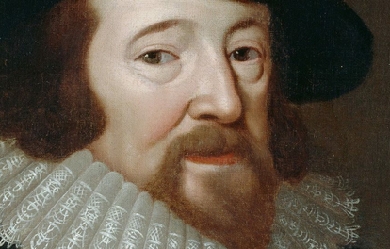
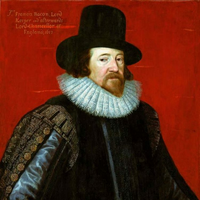
Francis Bacon, 1st Viscount St Alban, PC KC (/ˈbeɪkən/; 22 January 1561– 9 April 1626) was an English philosopher, statesman, scientist, jurist, orator, and author. He served both as Attorney General and as Lord Chancellor of England. After his death, he remained extremely influential through his works, especially as philosophical advocate and practitioner of the scientific method during the scientific revolution. Bacon has been called the father of empiricism. His works argued for the possibility of scientific knowledge based only upon inductive and careful observation of events in nature. Most importantly, he argued this could be achieved by use of a skeptical and methodical approach whereby scientists aim to avoid misleading themselves. While his own practical ideas about such a method, the Baconian method, did not have a long lasting influence, the general idea of the importance and possibility of a skeptical methodology makes Bacon the father of scientific method. This marked a new turn in the rhetorical and theoretical framework for science, the practical details of which are still central in debates about science and methodology today. Bacon was generally neglected at court by Queen Elizabeth, but after the accession of King James I in 1603, Bacon was knighted. He was later created Baron Verulam in 1618 and Viscount St. Alban in 1621. Because he had no heirs, both titles became extinct upon his death in 1626, at 65 years of age. Bacon died of pneumonia, with one account by John Aubrey stating that he had contracted the condition while studying the effects of freezing on the preservation of meat. Biography Early life Francis Bacon was born on 22 January 1561 at York House near the Strand in London, the son of Sir Nicholas Bacon by his second wife, Anne (Cooke) Bacon, the daughter of the noted humanist Anthony Cooke. His mother’s sister was married to William Cecil, 1st Baron Burghley, making Burghley Bacon’s uncle. Biographers believe that Bacon was educated at home in his early years owing to poor health, which would plague him throughout his life. He received tuition from John Walsall, a graduate of Oxford with a strong leaning toward Puritanism. He entered Trinity College, Cambridge, on 5 April 1573 at the age of 12, living for three years there, together with his older brother Anthony Bacon under the personal tutelage of Dr John Whitgift, future Archbishop of Canterbury. Bacon’s education was conducted largely in Latin and followed the medieval curriculum. He was also educated at the University of Poitiers. It was at Cambridge that he first met Queen Elizabeth, who was impressed by his precocious intellect, and was accustomed to calling him “The young lord keeper”. His studies brought him to the belief that the methods and results of science as then practised were erroneous. His reverence for Aristotle conflicted with his rejection of Aristotelian philosophy, which seemed to him barren, disputatious and wrong in its objectives. On 27 June 1576, he and Anthony entered de societate magistrorum at Gray’s Inn. A few months later, Francis went abroad with Sir Amias Paulet, the English ambassador at Paris, while Anthony continued his studies at home. The state of government and society in France under Henry III afforded him valuable political instruction. For the next three years he visited Blois, Poitiers, Tours, Italy, and Spain. During his travels, Bacon studied language, statecraft, and civil law while performing routine diplomatic tasks. On at least one occasion he delivered diplomatic letters to England for Walsingham, Burghley, and Leicester, as well as for the queen. The sudden death of his father in February 1579 prompted Bacon to return to England. Sir Nicholas had laid up a considerable sum of money to purchase an estate for his youngest son, but he died before doing so, and Francis was left with only a fifth of that money. Having borrowed money, Bacon got into debt. To support himself, he took up his residence in law at Gray’s Inn in 1579, his income being supplemented by a grant from his mother Lady Anne of the manor of Marks near Romford in Essex, which generated a rent of £46. Parliamentarian Bacon stated that he had three goals: to uncover truth, to serve his country, and to serve his church. He sought to further these ends by seeking a prestigious post. In 1580, through his uncle, Lord Burghley, he applied for a post at court that might enable him to pursue a life of learning, but his application failed. For two years he worked quietly at Gray’s Inn, until he was admitted as an outer barrister in 1582. His parliamentary career began when he was elected MP for Bossiney, Cornwall, in a by-election (similar to a special election in the US) in 1581. In 1584 he took his seat in parliament for Melcombe in Dorset, and in 1586 for Taunton. At this time, he began to write on the condition of parties in the church, as well as on the topic of philosophical reform in the lost tract Temporis Partus Maximus. Yet he failed to gain a position that he thought would lead him to success. He showed signs of sympathy to Puritanism, attending the sermons of the Puritan chaplain of Gray’s Inn and accompanying his mother to the Temple Church to hear Walter Travers. This led to the publication of his earliest surviving tract, which criticised the English church’s suppression of the Puritan clergy. In the Parliament of 1586, he openly urged execution for the Catholic Mary, Queen of Scots. About this time, he again approached his powerful uncle for help; this move was followed by his rapid progress at the bar. He became a bencher in 1586 and was elected a Reader in 1587, delivering his first set of lectures in Lent the following year. In 1589, he received the valuable appointment of reversion to the Clerkship of the Star Chamber, although he did not formally take office until 1608; the post was worth £1,600 a year. In 1588 he became MP for Liverpool and then for Middlesex in 1593. He later sat three times for Ipswich (1597, 1601, 1604) and once for Cambridge University (1614). He became known as a liberal-minded reformer, eager to amend and simplify the law. Though a friend of the crown, he opposed feudal privileges and dictatorial powers. He spoke against religious persecution. He struck at the House of Lords in its usurpation of the Money Bills. He advocated for the union of England and Scotland, which made him a significant influence toward the consolidation of the United Kingdom; and he later would advocate for the integration of Ireland into the Union. Closer constitutional ties, he believed, would bring greater peace and strength to these countries. Attorney General Bacon soon became acquainted with Robert Devereux, 2nd Earl of Essex, Queen Elizabeth’s favourite. By 1591 he acted as the earl’s confidential adviser. In 1592 he was commissioned to write a tract in response to the Jesuit Robert Parson’s anti-government polemic, which he titled Certain observations made upon a libel, identifying England with the ideals of democratic Athens against the belligerence of Spain. Bacon took his third parliamentary seat for Middlesex when in February 1593 Elizabeth summoned Parliament to investigate a Roman Catholic plot against her. Bacon’s opposition to a bill that would levy triple subsidies in half the usual time offended the Queen: opponents accused him of seeking popularity, and for a time the Court excluded him from favour. When the office of Attorney General fell vacant in 1594, Lord Essex’s influence was not enough to secure the position for Bacon and it was given to Sir Edward Coke. Likewise, Bacon failed to secure the lesser office of Solicitor General in 1595, the Queen pointedly snubbing him by appointing Sir Thomas Fleming instead. To console him for these disappointments, Essex presented him with a property at Twickenham, which Bacon subsequently sold for £1,800. In 1596 Bacon became Queen’s Counsel, but missed the appointment of Master of the Rolls. During the next few years, his financial situation remained embarrassing. His friends could find no public office for him, and a scheme for retrieving his position by a marriage with the wealthy and young widow Lady Elizabeth Hatton failed after she broke off their relationship upon accepting marriage to Sir Edward Coke, a further spark of enmity between the men. In 1598 Bacon was arrested for debt. Afterward, however, his standing in the Queen’s eyes improved. Gradually, Bacon earned the standing of one of the learned counsels, though he had no commission or warrant, and received no salary. His relationship with the Queen further improved when he severed ties with Essex—a shrewd move, as Essex would be executed for treason in 1601. With others, Bacon was appointed to investigate the charges against Essex. A number of Essex’s followers confessed that Essex had planned a rebellion against the Queen. Bacon was subsequently a part of the legal team headed by the Attorney General Sir Edward Coke at Essex’s treason trial. After the execution, the Queen ordered Bacon to write the official government account of the trial, which was later published as A DECLARATION of the Practices and Treasons attempted and committed by Robert late Earle of Essex and his Complices, against her Majestie and her Kingdoms... after Bacon’s first draft was heavily edited by the Queen and her ministers. According to his personal secretary and chaplain, William Rawley, as a judge Bacon was always tender-hearted, “looking upon the examples with the eye of severity, but upon the person with the eye of pity and compassion”. And also that “he was free from malice”, “no revenger of injuries”, and “no defamer of any man”. James I comes to the throne The succession of James I brought Bacon into greater favour. He was knighted in 1603. In another shrewd move, Bacon wrote his Apologies in defence of his proceedings in the case of Essex, as Essex had favoured James to succeed to the throne. The following year, during the course of the uneventful first parliament session, Bacon married Alice Barnham. In June 1607 he was at last rewarded with the office of solicitor general. The following year, he began working as the Clerkship of the Star Chamber. Despite a generous income, old debts still could not be paid. He sought further promotion and wealth by supporting King James and his arbitrary policies. In 1610 the fourth session of James’s first parliament met. Despite Bacon’s advice to him, James and the Commons found themselves at odds over royal prerogatives and the king’s embarrassing extravagance. The House was finally dissolved in February 1611. Throughout this period Bacon managed to stay in the favour of the king while retaining the confidence of the Commons. In 1613 Bacon was finally appointed attorney general, after advising the king to shuffle judicial appointments. As attorney general, Bacon, by his zealous efforts—which included torture—to obtain the conviction of Edmund Peacham for treason, raised legal controversies of high constitutional importance; and successfully prosecuted Robert Carr, 1st Earl of Somerset, and his wife, Frances Howard, Countess of Somerset, for murder in 1616. The so-called Prince’s Parliament of April 1614 objected to Bacon’s presence in the seat for Cambridge and to the various royal plans that Bacon had supported. Although he was allowed to stay, parliament passed a law that forbade the attorney general to sit in parliament. His influence over the king had evidently inspired resentment or apprehension in many of his peers. Bacon, however, continued to receive the King’s favour, which led to his appointment in March 1617 as temporary Regent of England (for a period of a month), and in 1618 as Lord Chancellor. On 12 July 1618 the king created Bacon Baron Verulam, of Verulam, in the Peerage of England; he then became known as Francis, Lord Verulam. Bacon continued to use his influence with the king to mediate between the throne and Parliament, and in this capacity he was further elevated in the same peerage, as Viscount St Alban, on 27 January 1621. Lord Chancellor and public disgrace Bacon’s public career ended in disgrace in 1621. After he fell into debt, a parliamentary committee on the administration of the law charged him with 23 separate counts of corruption. His lifelong enemy, Sir Edward Coke, who had instigated these accusations, was one of those appointed to prepare the charges against the chancellor. To the lords, who sent a committee to enquire whether a confession was really his, he replied, “My lords, it is my act, my hand, and my heart; I beseech your lordships to be merciful to a broken reed.” He was sentenced to a fine of £40,000 and committed to the Tower of London at the king’s pleasure; the imprisonment lasted only a few days and the fine was remitted by the king. More seriously, parliament declared Bacon incapable of holding future office or sitting in parliament. He narrowly escaped undergoing degradation, which would have stripped him of his titles of nobility. Subsequently, the disgraced viscount devoted himself to study and writing. There seems little doubt that Bacon had accepted gifts from litigants, but this was an accepted custom of the time and not necessarily evidence of deeply corrupt behaviour. While acknowledging that his conduct had been lax, he countered that he had never allowed gifts to influence his judgement and, indeed, he had on occasion given a verdict against those who had paid him. He even had an interview with King James in which he assured: The law of nature teaches me to speak in my own defence: With respect to this charge of bribery I am as innocent as any man born on St. Innocents Day. I never had a bribe or reward in my eye or thought when pronouncing judgment or order... I am ready to make an oblation of myself to the King He also wrote the following to Buckingham: My mind is calm, for my fortune is not my felicity. I know I have clean hands and a clean heart, and I hope a clean house for friends or servants; but Job himself, or whoever was the justest judge, by such hunting for matters against him as hath been used against me, may for a time seem foul, especially in a time when greatness is the mark and accusation is the game. The true reason for his acknowledgement of guilt is the subject of debate, but some authors speculate that it may have been prompted by his sickness, or by a view that through his fame and the greatness of his office he would be spared harsh punishment. He may even have been blackmailed, with a threat to charge him with sodomy, into confession. The British jurist Basil Montagu wrote in Bacon’s defence, concerning the episode of his public disgrace: Bacon has been accused of servility, of dissimulation, of various base motives, and their filthy brood of base actions, all unworthy of his high birth, and incompatible with his great wisdom, and the estimation in which he was held by the noblest spirits of the age. It is true that there were men in his own time, and will be men in all times, who are better pleased to count spots in the sun than to rejoice in its glorious brightness. Such men have openly libelled him, like Dewes and Weldon, whose falsehoods were detected as soon as uttered, or have fastened upon certain ceremonious compliments and dedications, the fashion of his day, as a sample of his servility, passing over his noble letters to the Queen, his lofty contempt for the Lord Keeper Puckering, his open dealing with Sir Robert Cecil, and with others, who, powerful when he was nothing, might have blighted his opening fortunes for ever, forgetting his advocacy of the rights of the people in the face of the court, and the true and honest counsels, always given by him, in times of great difficulty, both to Elizabeth and her successor. When was a “base sycophant” loved and honoured by piety such as that of Herbert, Tennison, and Rawley, by noble spirits like Hobbes, Ben Jonson, and Selden, or followed to the grave, and beyond it, with devoted affection such as that of Sir Thomas Meautys. Personal life When he was 36, Bacon courted Elizabeth Hatton, a young widow of 20. Reportedly, she broke off their relationship upon accepting marriage to a wealthier man, Bacon’s rival, Edward Coke. Years later, Bacon still wrote of his regret that the marriage to Hatton had not taken place. At the age of 45, Bacon married Alice Barnham, the 14-year-old daughter of a well-connected London alderman and MP. Bacon wrote two sonnets proclaiming his love for Alice. The first was written during his courtship and the second on his wedding day, 10 May 1606. When Bacon was appointed lord chancellor, “by special Warrant of the King”, Lady Bacon was given precedence over all other Court ladies. Reports of increasing friction in his marriage to Alice appeared, with speculation that some of this may have been due to financial resources not being as readily available to her as she had been accustomed to. Alice was reportedly interested in fame and fortune, and when reserves of money were no longer available there were complaints about where all the money was going. Alice Chambers Bunten wrote in her Life of Alice Barnham that, upon their descent into debt, she actually went on trips to ask for financial favours and assistance from their circle of friends. Bacon disinherited her upon discovering her secret romantic relationship with Sir John Underhill. He rewrote his will, which had previously been very generous—leaving her lands, goods, and income—revoking it all. Bacon’s personal secretary and chaplain, William Rawley, however, wrote in his biography of Bacon that his marriage was one of “much conjugal love and respect”, mentioning a robe of honour that he gave to Alice and which “she wore unto her dying day, being twenty years and more after his death”. The well-connected antiquary John Aubrey noted in his Brief Lives concerning Bacon, “He was a Pederast. His Ganimeds and Favourites tooke Bribes”, biographers continue to debate Bacon’s sexual inclinations and the precise nature of his personal relationships. Some authors believe that despite his marriage, Bacon was primarily attracted to men. Forker, for example, has explored the “historically documentable sexual preferences” of both King James and Bacon, and concluded they were all oriented to “masculine love”, a contemporary term that “seems to have been used exclusively to refer to the sexual preference of men for members of their own gender.” The Jacobean antiquarian Sir Simonds D’Ewes implied there had been a question of bringing him to trial for buggery, which his brother Anthony Bacon had also been charged with. This conclusion has been disputed by others, who point to lack of consistent evidence, and consider the sources to be more open to interpretation. In his “New Atlantis”, Bacon describes his utopian island as being “the chastest nation under heaven”, in which there was no prostitution or adultery, and further saying that “as for masculine love, they have no touch of it”. Death On 9 April 1626, Bacon died of pneumonia while at Arundel mansion at Highgate outside London. An influential account of the circumstances of his death was given by John Aubrey’s Brief Lives, with Aubrey stating he contracted pneumonia while studying the effects of freezing on the preservation of meat. Aubrey has been criticised for his evident credulousness in this and other works; on the other hand, he knew Thomas Hobbes, Bacon’s fellow-philosopher and friend. Aubrey’s vivid account, which portrays Bacon as a martyr to experimental scientific method, had him journeying to Highgate through the snow with the King’s physician when he is suddenly inspired by the possibility of using the snow to preserve meat: “They were resolved they would try the experiment presently. They alighted out of the coach and went into a poor woman’s house at the bottom of Highgate hill, and bought a fowl, and made the woman exenterate it.” After stuffing the fowl with snow, Bacon contracted a fatal case of pneumonia. Some people, including Aubrey, consider these two contiguous, possibly coincidental events as related and causative of his death: "The Snow so chilled him that he immediately fell so extremely ill, that he could not return to his Lodging... but went to the Earle of Arundel’s house at Highgate, where they put him into... a damp bed that had not been layn-in... which gave him such a cold that in 2 or 3 days as I remember Mr Hobbes told me, he died of Suffocation.” Being unwittingly on his deathbed, the philosopher wrote his last letter to his absent host and friend Lord Arundel: My very good Lord,—I was likely to have had the fortune of Caius Plinius the elder, who lost his life by trying an experiment about the burning of Mount Vesuvius; for I was also desirous to try an experiment or two touching the conservation and induration of bodies. As for the experiment itself, it succeeded excellently well; but in the journey between London and Highgate, I was taken with such a fit of casting as I know not whether it were the Stone, or some surfeit or cold, or indeed a touch of them all three. But when I came to your Lordship’s House, I was not able to go back, and therefore was forced to take up my lodging here, where your housekeeper is very careful and diligent about me, which I assure myself your Lordship will not only pardon towards him, but think the better of him for it. For indeed your Lordship’s House was happy to me, and I kiss your noble hands for the welcome which I am sure you give me to it. I know how unfit it is for me to write with any other hand than mine own, but by my troth my fingers are so disjointed with sickness that I cannot steadily hold a pen. Another account appears in a biography by William Rawley, Bacon’s personal secretary and chaplain: He died on the ninth day of April in the year 1626, in the early morning of the day then celebrated for our Saviour’s resurrection, in the sixty-sixth year of his age, at the Earl of Arundel’s house in Highgate, near London, to which place he casually repaired about a week before; God so ordaining that he should die there of a gentle fever, accidentally accompanied with a great cold, whereby the defluxion of rheum fell so plentifully upon his breast, that he died by suffocation. At the news of his death, over 30 great minds collected together their eulogies of him, which were then later published in Latin. He left personal assets of about £7,000 and lands that realised £6,000 when sold. His debts amounted to more than £23,000, equivalent to more than £3m at current value. Philosophy and works Francis Bacon’s philosophy is displayed in the vast and varied writings he left, which might be divided into three great branches: Scientific works– in which his ideas for an universal reform of knowledge into scientific methodology and the improvement of mankind’s state using the Scientific method are presented. Religious and literary works– in which he presents his moral philosophy and theological meditations. Juridical works– in which his reforms in English Law are proposed. Influence Science Bacon’s seminal work Novum Organum was influential in the 1630s and 1650s among scholars, in particular Sir Thomas Browne, who in his encyclopaedia Pseudodoxia Epidemica (1646–72) frequently adheres to a Baconian approach to his scientific enquiries. During the Restoration, Bacon was commonly invoked as a guiding spirit of the Royal Society founded under Charles II in 1660. During the 18th-century French Enlightenment, Bacon’s non-metaphysical approach to science became more influential than the dualism of his French contemporary Descartes, and was associated with criticism of the ancien regime. In 1733 Voltaire introduced him to a French audience as the “father” of the scientific method, an understanding which had become widespread by the 1750s. In the 19th century his emphasis on induction was revived and developed by William Whewell, among others. He has been reputed as the “Father of Experimental Philosophy”. He also wrote a long treatise on Medicine, History of Life and Death, with natural and experimental observations for the prolongation of life. One of his biographers, the historian William Hepworth Dixon, states: “Bacon’s influence in the modern world is so great that every man who rides in a train, sends a telegram, follows a steam plough, sits in an easy chair, crosses the channel or the Atlantic, eats a good dinner, enjoys a beautiful garden, or undergoes a painless surgical operation, owes him something.” In 1902 Hugo von Hofmannsthal published a fictional letter addressed to Bacon and dated 1603, about a writer who is experiencing a crisis of language. Known as The Lord Chandos Letter, it has been proposed that Bacon was identified as its recipient as having laid the foundation for the work of scientists such as Ernst Mach, notable both for his academic distinction in the history and philosophy of the inductive sciences, and for his own contributions to physics. North America Bacon played a leading role in establishing the British colonies in North America, especially in Virginia, the Carolinas and Newfoundland in northeastern Canada. His government report on “The Virginia Colony” was submitted in 1609. In 1610 Bacon and his associates received a charter from the king to form the Tresurer and the Companye of Adventurers and planter of the Cittye of London and Bristoll for the Collonye or plantacon in Newfoundland, and sent John Guy to found a colony there. Thomas Jefferson, the third President of the United States, wrote: “Bacon, Locke and Newton. I consider them as the three greatest men that have ever lived, without any exception, and as having laid the foundation of those superstructures which have been raised in the Physical and Moral sciences”. In 1910 Newfoundland issued a postage stamp to commemorate Bacon’s role in establishing the colony. The stamp describes Bacon as "the guiding spirit in Colonization Schemes in 1610". Moreover, some scholars believe he was largely responsible for the drafting, in 1609 and 1612, of two charters of government for the Virginia Colony. William Hepworth Dixon considered that Bacon’s name could be included in the list of Founders of the United States. Law Although few of his proposals for law reform were adopted during his lifetime, his legal legacy was considered by the magazine New Scientist in 1961 as having influenced the drafting of the Napoleonic Code as well as the law reforms introduced by 19th-century British Prime Minister Sir Robert Peel. The historian William Hepworth Dixon had referred to the Napoleonic Code as “the sole embodiment of Bacon’s thought”, saying that Bacon’s legal work “has had more success abroad than it has found at home”, and that in France “it has blossomed and come into fruit”. Harvey Wheeler attributed to Bacon, in Francis Bacon’s Verulamium—the Common Law Template of The Modern in English Science and Culture, the creation of these distinguishing features of the modern common law system: using cases as repositories of evidence about the “unwritten law”; determining the relevance of precedents by exclusionary principles of evidence and logic; treating opposing legal briefs as adversarial hypotheses about the application of the “unwritten law” to a new set of facts. As late as the 18th century some juries still declared the law rather than the facts, but already before the end of the 17th century Sir Matthew Hale explained modern common law adjudication procedure and acknowledged Bacon as the inventor of the process of discovering unwritten laws from the evidences of their applications. The method combined empiricism and inductivism in a new way that was to imprint its signature on many of the distinctive features of modern English society. Paul H. Kocher writes that Bacon is considered by some jurists to be the father of modern Jurisprudence. Bacon is commemorated with a statue in Gray’s Inn, South Square in London where he received his legal training, and where he was elected Treasurer of the Inn in 1608. James McClellan, a political scientist from the University of Virginia, considered Bacon to have had “a great following” in the American colonies. More recent scholarship on Bacon’s jurisprudence has focused on his advocating torture as a legal recourse for the crown. Bacon himself was not a stranger to the torture chamber: in his various legal capacities in both Elizabeth I’s and James I’s reigns, Bacon was listed as a commissioner on five torture warrants. In 1613(?), in a letter addressed to King James I on the question of torture’s place within English law, Bacon identifies the scope of torture: a means to further the investigation of threats to the state: “In the cases of treasons, torture is used for discovery, and not for evidence.” For Bacon, torture was not a punitive measure, an intended form of state repression, but instead offered a modus operandi for the government agent tasked with uncovering acts of treason. Historical debates Bacon and Shakespeare The Baconian hypothesis of Shakespearean authorship, first proposed in the mid-19th century, contends that Francis Bacon wrote some or even all of the plays conventionally attributed to William Shakespeare. Occult hypotheses Francis Bacon often gathered with the men at Gray’s Inn to discuss politics and philosophy, and to try out various theatrical scenes that he admitted writing. Bacon’s alleged connection to the Rosicrucians and the Freemasons has been widely discussed by authors and scholars in many books. However, others, including Daphne du Maurier in her biography of Bacon, have argued that there is no substantive evidence to support claims of involvement with the Rosicrucians. Frances Yates does not make the claim that Bacon was a Rosicrucian, but presents evidence that he was nevertheless involved in some of the more closed intellectual movements of his day. She argues that Bacon’s movement for the advancement of learning was closely connected with the German Rosicrucian movement, while Bacon’s New Atlantis portrays a land ruled by Rosicrucians. He apparently saw his own movement for the advancement of learning to be in conformity with Rosicrucian ideals. The link between Bacon’s work and the Rosicrucians ideals which Yates allegedly found was the conformity of the purposes expressed by the Rosicrucian Manifestos and Bacon’s plan of a “Great Instauration”, for the two were calling for a reformation of both “divine and human understanding”, as well as both had in view the purpose of mankind’s return to the “state before the Fall”. Another major link is said to be the resemblance between Bacon’s New Atlantis and the German Rosicrucian Johann Valentin Andreae’s Description of the Republic of Christianopolis (1619). Andreae describes a utopic island in which Christian theosophy and applied science ruled, and in which the spiritual fulfillment and intellectual activity constituted the primary goals of each individual, the scientific pursuits being the highest intellectual calling—linked to the achievement of spiritual perfection. Andreae’s island also depicts a great advancement in technology, with many industries separated in different zones which supplied the population’s needs—which shows great resemblance to Bacon’s scientific methods and purposes. The Rosicrucian organisation AMORC claims that Bacon was the “Imperator” (leader) of the Rosicrucian Order in both England and the European continent, and would have directed it during his lifetime. Bacon’s influence can also be seen on a variety of religious and spiritual authors, and on groups that have utilised his writings in their own belief systems. Bibliography * Some of the more notable works by Bacon are: * Essays (1st edition 1597) * The Advancement and Proficience of Learning Divine and Human (1605) * Essays (2nd edition– 38 essays, 1612) * Novum Organum Scientiarum ('New Method’, 1620) * Essays, or Counsels Civil and Moral (3rd/final edition– 58 essays, 1625) * New Atlantis (1627) References Wikipedia—https://en.wikipedia.org/wiki/Francis_Bacon
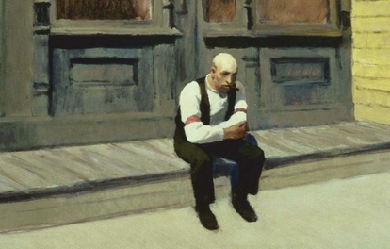
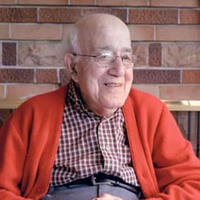
Carl Rakosi (November 6, 1903– June 25, 2004) was the last surviving member of the original group of poets who were given the rubric Objectivist. He was still publishing and performing his poetry well into his 90s. Early life Rakosi was born in Berlin and lived there and in Hungary until 1910, when he moved to the United States to live with his father and stepmother. His father was a jeweler and watchmaker in Chicago and later in Gary, Indiana. The family lived in semi-poverty but contrived to send him to the University of Chicago and then to the University of Wisconsin–Madison. During his time studying at the university level, he started writing poetry. On graduating, he worked for a time as a social worker, then returned to college to study psychology. At this time, he changed his name to Callman Rawley because he felt he stood a better chance of being employed if he had a more American-sounding name. After a spell as a psychologist and teacher, he returned to social work for the rest of his working life. Early writings At the University of Wisconsin–Madison, Rakosi edited the Wisconsin Literary Magazine. His own poetry at this stage was influenced by W. B. Yeats, Wallace Stevens, and E. E. Cummings. He also started reading William Carlos Williams and T. S. Eliot. By 1925, he was publishing poems in The Little Review and Nation. Pound and the Objectivists By the late 1920s, Rakosi was in correspondence with Ezra Pound, who prompted Louis Zukofsky to contact him. This led to Rakosi’s inclusion in the Objectivist issue of Poetry and in the Objectivist Anthology. Rakosi himself had reservations about the Objectivist tag, feeling that the poets involved were too different from each other to form a group in any meaningful sense of the word. He did, however, especially admire the work of Charles Reznikoff. Later career Like a number of his fellow Objectivists, Rakosi abandoned poetry in the 1940s. After his 1941 Selected Poems he dedicated himself to social work and apparently neither read nor wrote poetry. Years earlier, shortly after his twenty-first birthday, Rakosi had legally changed his name to Callman Rawley, believing that he would not find work with his foreign-sounding name. Under his adopted name, he served as head of the Minneapolis Jewish Children’s and Family Service from 1945 until his retirement in 1968. A letter from the English poet Andrew Crozier about his early poetry was the trigger that started Rakosi writing again. His first book in 26 years, Amulet, was published by New Directions in 1967 and his Collected Poems in 1986 by the National Poetry Foundation. These were followed by several more volumes and by readings across the United States and Europe. In early November 2003, Rakosi celebrated his 100th birthday with friends at the San Francisco Public Library. Upon his death Jacket Magazine editor John Tranter observed the following: Poet Carl Rakosi died on Friday afternoon June 25 at the age of 100, after a series of strokes, in his home in San Francisco. My wife Lyn and I were passing through California in November 2003, and we stopped by to have a coffee with Carl at his home in Sunset. By a lucky coincidence, it happened to be his 100th birthday. He was, as always, kind, thoughtful, bright and alert, and as sharp as a pin. We felt privileged to know him. External links Rakosi at Modern American Poetry The Carl Rakosi Papers in the Mandeville Special Collections Library at UC San Diego Carl Rakosi Reading and Interview on KPFA’s Ode To Gravity, 13 May 1971 (from The Internet Archive) Obituary in The Guardian, UK Carl Rakosi feature at Jacket Magazine includes Rakosi in conversation with Tom Devaney & Olivier Brossard; link to audio recordings at University of Pennsylvania, and poems, dedications & remembrances from Jane Augustine, Robert Creeley, Laurie Duggan, Michael Heller and Kent Johnson “Add-Verse” a poetry-photo-video project Rakosi participated in References Wikipedia—https://en.wikipedia.org/wiki/Carl_Rakosi
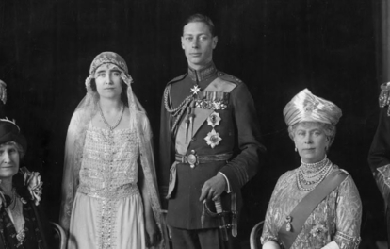

Lilian Helen Bowes Lyon (1895–1949) was a British poet. Biography Born 23 December 1895 at Ridley Hall, Northumberland. She was the youngest daughter of the Honourable Francis Bowes Lyon and was a first cousin of Elizabeth Bowes-Lyon, Queen Elizabeth the Queen Mother. During the First World War, Bowes Lyon helped at Glamis Castle (owned by her uncle) which became a convalescence home for soldiers. Her brother Charles Bowes Lyon was killed in the war on 23 October 1914, inspiring her poem “Battlefield” which was later published in Bright Feather Fading. After the Great War, Bowes Lyon studied for a time at the University of Oxford and then moved to London. She was independently wealthy. In 1929, she met the writer William Plomer CBE and through him, Laurens van der Post. She published two novels, The Buried Stream (1929) and Under the Spreading Tree (1931) but thereafter focused on poetry. Bowes Lyon published six individual collections with Jonathan Cape and a Collected Poems in 1948. Her “Collected Poems” contains an introduction by C. Day-Lewis, who noted the influences of Emily Dickinson, Hopkins and Christina Rossetti. Her verse appeared in many periodicals and anthologies including The Adelphi, Country Life, Kingdom Come, The Listener, The London Mercury, The Lyric (USA), The Observer, Orion, Punch, The Spectator, Time and Tide and “Poetry” (USA). During the Second World War, Bowes Lyon moved to the East End of London, where she used the Tilbury Docks unofficial air raid shelter and assisted with nursing the injured. She had several amputations due to thromboangiitis obliterans (Buerger’s Disease), losing toes, a foot, her lower legs and eventually both her legs below her hips. She returned to her home in Kensington and continued to write poetry despite the thromboangitis obliterans beginning to affect her hands. These poems, found amongst William Plomer’s papers at University of Durham, were published in “Uncollected Poems” by Tragara Press. She died on 25 July 1949.
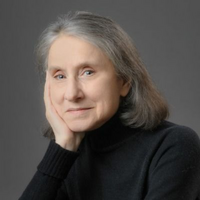
Maryann Corbett (née Zillotti, Washington, D.C.) is an American poet, medievalist, and linguist.She grew up in northern Virginia. She did her undergraduate work at the College of William and Mary in Williamsburg, Virginia, and graduated with a doctorate in English from the University of Minnesota.Her work has appeared in Southwest Review, Barrow Street, Rattle, River Styx, Atlanta Review, The Evansville Review, Measure, Literary Imagination, The Dark Horse, Italian Americana, Mezzo Cammin, Linebreak, Subtropics, Verse Daily, American Life in Poetry, The Poetry Foundation, The Writer’s Almanac, and many other venues in print and online, as well as an assortment of anthologies, including The Best American Poetry 2018. She has been a several-time Pushcart and Best of the Net nominee; a finalist for the 2009 Morton Marr Prize, the 2010 Best of the Net anthology, and the 2011 and 2016 Able Muse Book Prize; and a winner of the Lyric Memorial Award, the Willis Barnstone Translation Prize, and the Richard Wilbur Award. Her third book, Mid Evil, is the Wilbur Award winner and has been published by the University of Evansville Press.She has worked as a writing teacher and indexer for the Minnesota Legislature. She lives in St. Paul, Minnesota.
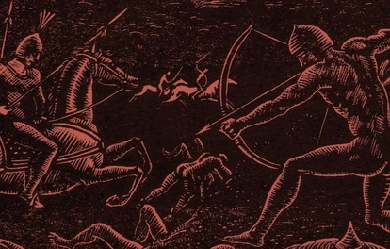
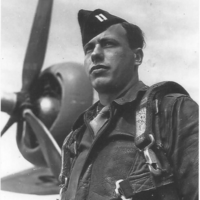
Ralph Nicholas Chubb (8 February 1892– 14 January 1960) was an English poet, printer, and artist. Heavily influenced by Whitman, Blake, and the Romantics, his work was the creation of a highly intricate personal mythology, one that was anti-materialist and sexually revolutionary. Life Ralph Chubb was born in Harpenden, Hertfordshire. His family moved to the historic town of St Albans before his first birthday. Chubb attended St Albans School and Selwyn College, Cambridge before becoming an officer in the First World War. He served with distinction but developed neurasthenia, and he was invalided out in 1918. From 1919 to 1922 Chubb studied at the Slade School of Art in London. It was there that he met Leon Underwood and other influential artists. He went on to contribute several articles and poems for Underwood’s magazine, The Island. Although his work was displayed at such venues as the Goupil Gallery and the Royal Academy of Art, his paintings did not sell. There are several in public collections in Britain. His major painting The Well (1920) is in Wakefield; Southampton has bathers with boys wrestling, and there are nudes at Leamington, all illustrated in the Public Art Foundation catalogues. He moved with his family to the village of Curridge, near Newbury in Berkshire. He began to devote his artistic talents to the printed works which would remain his chief labour in life. His books were created in several chief phases. His typeset books of the twenties were a humble offering, exhibiting Chubb’s talent for woodcutting and his quaint, visually inspired poetry. Even at this early stage, Chubb’s lifelong obsession with adolescent males was beginning to become apparent. He expands upon this theme more explicitly in An Appendix, a pederastic and spiritualist manifesto duplicated from a cursive manuscript. An Appendix was the first of his printed works to be printed in his own hand; he soon followed this with the first of his opulent lithographic books, The Sun Spirit. Throughout the nineteen-thirties, Chubb’s books became more elaborate and appealing. Water Cherubs crystallizes Chubb’s aesthetic of the youthful male form, and The Secret Country unfolds like an illuminated manuscript, recounting stories of Chubb’s family and his journeys among the Romani of the New Forest in Hampshire. Chubb’s printing press was interrupted by the war, but in 1948 he entered into the third period of career with two massive volumes: The Child Of Dawn and Flames of Sunrise. Each page of these two volumes is crowded with obscure digressions on Chubb’s mythology and drawings of symbolic significance. Briefly summarized, Chubb’s vision was a prophecy of the redemption of 'Albion’, or England, by the boy-god Ra-el-phaos, of whom Ralph claimed himself to be the prophet and herald. This echoes an earlier announcement to be found in The Heavenly Cupid: I announce a secret event as tremendous and mysterious as any that has occurred in the spiritual history of the world. I announce the inauguration of a Third Dispensation, the dispensation of the Holy Ghost on earth, and the visible advent thereof on earth in the form of a Young Boy of thirteen years old, naked perfect and unblemished. Other themes run through all of Chubb’s work. He was forever haunted by the memory of a young chorister at St Albans who disappeared from Chubb’s life just as he had summoned up the courage to speak to him. Similarly, a brief sexual relationship with another boy when Ralph was 19 seemed to serve as a template for future visions of paradise. Chubb’s books become progressively more self-involved and paranoid. Seeking to articulate his pederastic desires, he created a personal mythology which explained everything in terms only he could understand. Nonetheless, Chubb’s work is of fascinating psychological significance; each of the various angels, knights, seers, and boy-gods in his dream world represents an aspect of his introspective and persecuted self. Chubb, like many other artists of his generation, resented science for its intrusion into his imagination. He disparaged the scientists, orthodox theologians, and politicians of world, accusing them of squelching his personal thirst for liberty. In 1927 he wrote: Existence, besides being a miracle, is a symbol. Albeit here for inscrutable purposes the spirit is only to be discerned as it were in a distorting-glass. (The Book of God’s Madness) Chubb sought to persuade his readers in An Appendix of the verity of his solipsism by illustrating some examples of serendipitous events from his life. His aim is more on the mark when he excoriates the taboos and frustrations of modern life. The green green hills, the blue blue sky, blue sea, great golden SUN, yellow dandelions, the pink naked beauty of ripe boyhood, deathless free and happy, brimming with health. This I must have. Nothing less than this can ever satisfy me! GIVE ME MY HEAVEN! GIVE ME MY HEAVEN! (Water-Cherubs) Failing in health and facing continuing legal and financial difficulties, Ralph Chubb abandoned his controversial works in the mid-fifties, and began to collect and reprint his early poems and childhood memories. Treasure Trove and The Golden City (published posthumously) are devoid of the usual profusion of naked, lissome youths, but instead offer a glimpse into his youthful imagination, and some of his most charming poetry. In the final years of his life he donated his remaining volumes to the national libraries of Britain. He died peacefully at Fair Oak Cottage in Hampshire and was buried next to his parents at the Kingsclere Woodland Church. Chubb’s own assessment of his work conforms to the general critical reaction: I do not necessarily claim to be a great artist or writer; but I claim to be a true spirit– this is a subtler test. Seek me out; but you may not find me. (An Appendix) Works * None of the editions of Chubb’s books exceed more than 200 copies, and some of his lithographed masterworks exist in only 30 or 40 copies, of which a mere 6 or 7 are meticulously hand-colored by Chubb. * The dates and titles of Chubb’s printed works are given below. Early typeset works * 1924 Manhood * 1924 The Sacrifice of Youth * 1925 A Fable of Love & War * 1927 The Cloud & the Voice * 1928 Woodcuts * 1928 The Book of God’s Madness * 1929 An Appendix (duplicated hand-written text) Lithographed texts * 1930 Songs of Mankind * 1931 The Sun Spirit * 1934 The Heavenly Cupid * 1935 Songs Pastoral and Paradisal (illustrated by Vincent Stuart; script by Helen Hinkley) * 1936 Water Cherubs * 1939 The Secret Country Post-war prophetic texts * 1948 The Child of Dawn * 1953 Flames of Sunrise Juvenalia and early romances * 1957 Treasure Trove * 1960 The Golden City Posthumous works * 1965 The Day of St Alban * 1970 Autumn Leaves References and further reading * Cave, Roderick (1960). In Blake’s Tradition: the Press of Ralph Chubb. The American Book Collector. 11 (2), p8-17 * Cave, Roderick (1960). 'Blake’s Mantle’, a Memoir of Ralph Chubb. Book Design and Production. 3 (2), p24-8 * D’Arch Smith, Timothy (1970). Love in Earnest. London: Routledge & Kegan Paul. * Rahman, Tariq (1991). Ephebophilia and the Creation of a Spiritual Myth in the Works of Ralph Nicholas Chubb. Journal of Homosexuality. 20 (1-2), p103-127 * Reid, Anthony (1970). Ralph Chubb: The Unknown. Reprinted from The Private Library. 3 (3-4). References Wikipedia—https://en.wikipedia.org/wiki/Ralph_Chubb
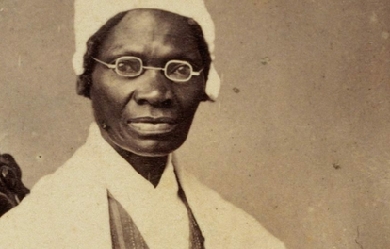
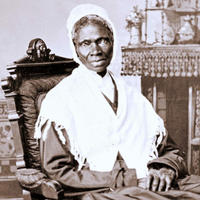
Sojourner Truth (born Isabella ("Bell") Baumfree; C. 1797– November 26, 1883) was an African-American abolitionist and women’s rights activist. Truth was born into slavery in Swartekill, Ulster County, New York, but escaped with her infant daughter to freedom in 1826. After going to court to recover her son, in 1828 she became the first black woman to win such a case against a white man. She gave herself the name Sojourner Truth in 1843 after she became convinced that God had called her to leave the city and go into the countryside “testifying the hope that was in her.” Her best-known speech was delivered extemporaneously, in 1851, at the Ohio Women’s Rights Convention in Akron, Ohio. The speech became widely known during the Civil War by the title “Ain’t I a Woman?,” a variation of the original speech re-written by someone else using a stereotypical Southern dialect; whereas Sojourner Truth was from New York and grew up speaking Dutch as her first language. During the Civil War, Truth helped recruit black troops for the Union Army; after the war, she tried unsuccessfully to secure land grants from the federal government for former slaves. In 2014, Truth was included in Smithsonian magazine’s list of the "100 Most Significant Americans of All Time". Early years Truth was one of the ten or twelve children born to James and Elizabeth Baumfree (or Bomefree). Colonel Hardenbergh bought James and Elizabeth Baumfree from slave traders and kept their family at his estate in a big hilly area called by the Dutch name Swartekill (just north of present-day Rifton), in the town of Esopus, New York, 95 miles (153 km) north of New York City. Charles Hardenbergh inherited his father’s estate and continued to enslave people as a part of that estate’s property. When Charles Hardenbergh died in 1806, nine-year-old Truth (known as Belle), was sold at an auction with a flock of sheep for $100 to John Neely, near Kingston, New York. Until that time, Truth spoke only Dutch. She later described Neely as cruel and harsh, relating how he beat her daily and once even with a bundle of rods. Neely sold her in 1808, for $105, to Martinus Schryver of Port Ewen, a tavern keeper, who owned her for eighteen months. Schryver sold her in 1810 to John Dumont of West Park, New York. Although this fourth owner was kindly disposed toward her, considerable tension existed between Truth and Dumont’s second wife, Elizabeth Waring Dumont, who harassed her and made her life more difficult. (John Dumont’s first wife, Sarah “Sally” Waring Dumont (Elizabeth’s sister), died around 1805, five years before he bought Truth.) Around 1815, Truth met and fell in love with a slave named Robert from a neighboring farm. Robert’s owner (Charles Catton, Jr., a landscape painter) forbade their relationship; he did not want the people he enslaved to have children with people he was not enslaving, because he would not own the children. One day Robert sneaked over to see Truth. When Catton and his son found him, they savagely beat Robert until Dumont finally intervened, and Truth never saw Robert again. He later died some years later, perhaps as a result of the injuries, and the experience haunted Truth throughout her life. Truth eventually married an older slave named Thomas. She bore five children: James, her firstborn, who died in childhood, Diana (1815), fathered by either Robert or John Dumont, and Peter (1821), Elizabeth (1825), and Sophia (ca. 1826), all born after she and Thomas united. Freedom The state of New York began, in 1799, to legislate the abolition of slavery, although the process of emancipating those people enslaved in New York was not complete until July 4, 1827. Dumont had promised to grant Truth her freedom a year before the state emancipation, “if she would do well and be faithful.” However, he changed his mind, claiming a hand injury had made her less productive. She was infuriated but continued working, spinning 100 pounds of wool, to satisfy her sense of obligation to him. Late in 1826, Truth escaped to freedom with her infant daughter, Sophia. She had to leave her other children behind because they were not legally freed in the emancipation order until they had served as bound servants into their twenties. She later said “I did not run off, for I thought that wicked, but I walked off, believing that to be all right.” She found her way to the home of Isaac and Maria Van Wagenen in New Paltz, who took her and her baby in. Isaac offered to buy her services for the remainder of the year (until the state’s emancipation took effect), which Dumont accepted for $20. She lived there until the New York State Emancipation Act was approved a year later. Truth learned that her son Peter, then five years old, had been sold illegally by Dumont to an owner in Alabama. With the help of the Van Wagenens, she took the issue to court and in 1828, after months of legal proceedings, she got back her son, who had been abused by those who were enslaving him. Truth became one of the first black women to go to court against a white man and win the case. Truth had a life-changing religious experience during her stay with the Van Wagenens, and became a devout Christian. In 1829 she moved with her son Peter to New York City, where she worked as a housekeeper for Elijah Pierson, a Christian Evangelist. While in New York, she befriended Mary Simpson, a grocer on John Street who claimed she had once been enslaved by George Washington. They shared an interest in charity for the poor and became intimate friends. In 1832, she met Robert Matthews, also known as Prophet Matthias, and went to work for him as a housekeeper at the Matthias Kingdom communal colony. Elijah Pierson died, and Robert Matthews and Truth were accused of stealing from and poisoning him. Both were acquitted of the murder, though Matthews was convicted of lesser crimes, served time, and moved west. In 1839, Truth’s son Peter took a job on a whaling ship called the Zone of Nantucket. From 1840 to 1841, she received three letters from him, though in his third letter he told her he had sent five. Peter said he also never received any of her letters. When the ship returned to port in 1842, Peter was not on board and Truth never heard from him again. “The Spirit Calls Me” 1843 was a turning point for Truth. She became a Methodist, and on June 1, she changed her name to Sojourner Truth. She told friends: “The Spirit calls me, and I must go” and left to make her way traveling and preaching about the abolition of slavery. At that time, Truth began attending Millerite Adventist campmeetings. However, that did not last since Jesus failed to appear in 1843 and then again in 1844. Like many others disappointed, Truth distanced herself from her Millerite friends for a while. In 1844, she joined the Northampton Association of Education and Industry in Northampton, Massachusetts. Founded by abolitionists, the organization supported women’s rights and religious tolerance as well as pacifism. There were, in its four-and-a-half year history, a total of 240 members, though no more than 120 at any one time. They lived on 470 acres (1.9 km2), raising livestock, running a sawmill, a gristmill, and a silk factory. While there, Truth met William Lloyd Garrison, Frederick Douglass, and David Ruggles. In 1846, the group disbanded, unable to support itself. In 1845, she joined the household of George Benson, the brother-in-law of William Lloyd Garrison. In 1849, she visited John Dumont before he moved west. Truth started dictating her memoirs to her friend Olive Gilbert, and in 1850 William Lloyd Garrison privately published her book, The Narrative of Sojourner Truth: A Northern Slave. That same year, she purchased a home in what would become the village of Florence in Northampton for $300, and spoke at the first National Women’s Rights Convention in Worcester, Massachusetts. In 1854, with proceeds from sales of the Narrative and cartes-de-visite entitled “I sell the shadow to support the substance,” she paid off the mortgage held by her friend from the Community, Samuel L. Hill. “Ain’t I a Woman?” In 1851, Truth joined George Thompson, an abolitionist and speaker, on a lecture tour through central and western New York State. In May, she attended the Ohio Women’s Rights Convention in Akron, Ohio, where she delivered her famous extemporaneous speech on women’s rights, later known as “Ain’t I a Woman.” Her speech demanded equal human rights for all women as well as for all blacks. The convention was organized by Hannah Tracy and Frances Dana Barker Gage, who both were present when Truth spoke. Different versions of Truth’s words have been recorded, with the first one published a month later by Marius Robinson, a newspaper owner and editor who was in the audience. Robinson’s recounting of the speech included no instance of the question “Ain’t I a Woman?” Twelve years later in May 1863, Gage published another, very different, version. In it, Truth’s speech pattern had characteristics of Southern slaves, and the speech included sentences and phrases that Robinson didn’t report. Gage’s version of the speech became the historic standard version, and is known as “Ain’t I a Woman?” because that question was repeated four times. It is highly unlikely that Truth’s own speech pattern was Southern in nature, as she was born and raised in New York, and she spoke only Dutch until she was nine years old. In contrast to Robinson’s report, Gage’s 1863 version included Truth saying her 13 children were sold away from her into slavery. Truth is widely believed to have had five children, with one sold away, and was never known to boast more children. Gage’s 1863 recollection of the convention conflicts with her own report directly after the convention: Gage wrote in 1851 that Akron in general and the press in particular were largely friendly to the woman’s rights convention, but in 1863 she wrote that the convention leaders were fearful of the “mobbish” opponents. Other eyewitness reports of Truth’s speech told a calm story, one where all faces were “beaming with joyous gladness” at the session where Truth spoke; that not “one discordant note” interrupted the harmony of the proceedings. In contemporary reports, Truth was warmly received by the convention-goers, the majority of whom were long-standing abolitionists, friendly to progressive ideas of race and civil rights. In Gage’s 1863 version, Truth was met with hisses, with voices calling to prevent her from speaking. Over the next 10 years, Truth spoke before dozens, perhaps hundreds, of audiences. From 1851 to 1853, Truth worked with Marius Robinson, the editor of the Ohio Anti-Slavery Bugle, and traveled around that state speaking. In 1853, she spoke at a suffragist “mob convention” at the Broadway Tabernacle in New York City; that year she also met Harriet Beecher Stowe. In 1856, she traveled to Battle Creek, Michigan, to speak to a group called the “Friends of Human Progress.” In 1858, someone interrupted a speech and accused her of being a man; Truth opened her blouse and revealed her breasts. Other notable speeches Northampton Camp Meeting—1844, Northampton, Massachusetts: At a camp meeting where she was participating as an itinerant preacher, a band of “wild young men” disrupted the camp meeting, refused to leave, and threatening to burn down the tents. Truth caught the sense of fear pervading the worshipers and hid behind a trunk in her tent, thinking that since she was the only black person present, the mob would attack her first. However, she reasoned with herself and resolved to do something: as the noise of the mob increased and a female preacher was “trembling on the preachers’ stand,” Truth went to a small hill and began to sing “in her most fervid manner, with all the strength of her most powerful voice, the hymn on the resurrection of Christ." Her song, “It was Early in the Morning,” gathered the rioters to her and quieted them. They urged her to sing, preach, and pray for their entertainment. After singing songs and preaching for about an hour, Truth bargained with them to leave after one final song. The mob agreed and left the camp meeting. Abolitionist Convention—1840s, Boston, Massachusetts: William Lloyd Garrison invited Sojourner Truth to give a speech at an annual antislavery convention. Wendell Phillips was supposed to speak after her, which made her nervous since he was known as such a good orator. So Truth sang a song, “I am Pleading for My people,” which was her own original composition sung to the tune of Auld Lang Syne. Mob Convention—September 7, 1853: At the convention, young men greeted her with "a perfect storm,” hissing and groaning. In response, Truth said, “You may hiss as much as you please, but women will get their rights anyway. You can’t stop us, neither”. Sojourner, like other public speakers, often adapted her speeches to how the audience was responding to her. In her speech, Sojourner speaks out for women’s rights. She incorporates religious references in her speech, particularly the story of Esther. She then goes on to say that, just as women in scripture, women today are fighting for their rights. Moreover, Sojourner scolds the crowd for all their hissing and rude behavior, reminding them that God says to “Honor thy father and thy mother.” American Equal Rights Association—May 9–10, 1867: Her speech was addressed to the American Equal Rights Association, and divided into three sessions. Sojourner was received with loud cheers instead of hisses, now that she had a better-formed reputation established. The Call had advertised her name as one of the main convention speakers. For the first part of her speech, she spoke mainly about the rights of black women. Sojourner argued that because the push for equal rights had led to black men winning new rights, now was the best time to give black women the rights they deserve too. Throughout her speech she kept stressing that “we should keep things going while things are stirring” and fears that once the fight for colored rights settles down, it would take a long time to warm people back up to the idea of colored women’s having equal rights. In the second sessions of Sojourner’s speech, she utilized a story from the Bible to help strengthen her argument for equal rights for women. She ended her argument by accusing men of being self-centered, saying, “man is so selfish that he has got women’s rights and his own too, and yet he won’t give women their rights. He keeps them all to himself.” For the final session of Sojourner’s speech, the center of her attention was mainly on women’s right to vote. Sojourner told her audience that she owned her own house, as did other women, and must therefore pay taxes. Nevertheless, they were still unable to vote because they were women. Black women who were enslaved were made to do hard manual work, such as building roads. Sojourner argues that if these women were able to perform such tasks, then they should be allowed to vote because surely voting is easier than building roads. Eighth Anniversary of Negro Freedom—New Year’s Day, 1871: On this occasion the Boston papers related that “...seldom is there an occasion of more attraction or greater general interest. Every available space of sitting and standing room was crowded". She starts off her speech by giving a little background about her own life. Sojourner recounts how her mother told her to pray to God that she may have good masters and mistresses. She goes on to retell how her masters were not good to her, about how she was whipped for not understanding English, and how she would question God why he had not made her masters be good to her. Sojourner admits to the audience that she had once hated white people, but she says once she met her final master, Jesus, she was filled with love for everyone. Once enslaved folks were emancipated, she tells the crowd she knew her prayers had been answered. That last part of Sojourner’s speech brings in her main focus. Some freed enslaved people were living on government aid at that time, paid for by taxpayers. Sojourner announces that this is not any better for those colored people than it is for the members of her audience. She then proposes that black people are given their own land. Because a portion of the South’s population contained rebels that were unhappy with the abolishment of slavery, that region of the United States was not well suited for colored people. She goes on to suggest that colored people be given land out west to build homes and prosper on. On a mission In 1856, Truth bought a neighboring lot in Northampton, but she did not keep the new property for long. On September 3, 1857, she sold all her possessions, new and old, to Daniel Ives and moved to Battle Creek, Michigan, where she rejoined former members of the Millerite Movement who had formed the Seventh-day Adventist Church. Antislavery movements had begun early in Michigan and Ohio. Here, she also joined the nucleus of the Michigan abolitionists, the Progressive Friends, some who she had already met at national conventions. According to the 1860 census, her household in Harmonia included her daughter, Elizabeth Banks (age 35), and her grandsons James Caldwell (misspelled as “Colvin”; age 16) and Sammy Banks (age 8). During the Civil War, Truth helped recruit black troops for the Union Army. Her grandson, James Caldwell, enlisted in the 54th Massachusetts Regiment. In 1864, Truth was employed by the National Freedman’s Relief Association in Washington, D.C., where she worked diligently to improve conditions for African-Americans. In October of that year, she met President Abraham Lincoln. In 1865, while working at the Freedman’s Hospital in Washington, Truth rode in the streetcars to help force their desegregation. Truth is credited with writing a song, “The Valiant Soldiers”, for the 1st Michigan Colored Regiment; it was said to be composed during the war and sung by her in Detroit and Washington, D.C. It is sung to the tune of “John Brown’s Body” or “The Battle Hymn of the Republic”. Although Truth claimed to have written the words, it has been disputed (see “Marching Song of the First Arkansas”). In 1867, Truth moved from Harmonia to Battle Creek. In 1868, she traveled to western New York and visited with Amy Post, and continued traveling all over the East Coast. At a speaking engagement in Florence, Massachusetts, after she had just returned from a very tiring trip, when Truth was called upon to speak she stood up and said “Children, I have come here like the rest of you, to hear what I have to say.” In 1870, Truth tried to secure land grants from the federal government to former enslaved people, a project she pursued for seven years without success. While in Washington, D.C., she had a meeting with President Ulysses S. Grant in the White House. In 1872, she returned to Battle Creek and tried to vote in the presidential election, but was turned away at the polling place. Truth spoke about abolition, women’s rights, prison reform, and preached to the Michigan Legislature against capital punishment. Not everyone welcomed her preaching and lectures, but she had many friends and staunch support among many influential people at the time, including Amy Post, Parker Pillsbury, Frances Gage, Wendell Phillips, William Lloyd Garrison, Laura Smith Haviland, Lucretia Mott, Ellen G. White, and Susan B. Anthony.” Death and legacy Several days before Sojourner Truth died, a reporter came from the Grand Rapids Eagle to interview her. “Her face was drawn and emaciated and she was apparently suffering great pain. Her eyes were very bright and mind alert although it was difficult for her to talk.” Truth died at her Battle Creek home on November 26, 1883. On November 28 her funeral was held at the Congregational-Presbyterian Church officiated by its pastor, the Reverend Reed Stuart. Some of the prominent citizens of Battle Creek acted as pall-bearers. Truth was buried in the city’s Oak Hill Cemetery. The calendar of saints of the Episcopal Church remembers Sojourner Truth annually, together with Elizabeth Cady Stanton, Amelia Bloomer and Harriet Ross Tubman on July 20. The calendar of saints of the Lutheran Church remembers Sojourner Truth together with Harriet Tubman on March 10. A larger-than-life sculpture of Sojourner Truth by artist Tina Allen, was dedicated in 1999, which is the estimated bicentennial of Sojourner’s birth. The 12-foot tall Sojourner monument is cast bronze. Cultural references and commemorations Other honors and commemorations include (by year): 1862– William Wetmore Story’s statue, The Libyan Sibyl, inspired by Sojourner Truth, won an award at the London World Exhibition. 1892– Albion artist Frank Courter is commissioned to paint the meeting between Truth and President Abraham Lincoln. 1969– The leftist group the Sojourner Truth Organization is named after her. The group folded in 1985. 1971– Sojourner Truth Library at New Paltz State University of New York is named in Truth’s honor. 1976– Interstate 194 is named for her in Michigan. 1979– The artwork The Dinner Party features a place setting for Truth. 1980– The Inter Cooperative Council at the University of Michigan and the residents of the then Lenny Bruce House rename it as Sojourner Truth House in her honor. 1981– Truth is inducted into the National Women’s Hall of Fame in Seneca Falls, New York. 1981– Feminist theorist and author bell hooks titles her first major work after Truth’s “Ain’t I a Woman?” speech. 1983– Truth is in the first group of women inducted into the Michigan Women’s Hall of Fame in Lansing. 1986– The U.S. Postal Service issues a commemorative postage stamp honoring Sojourner Truth. 1987– Truth is commemorated in a monument of “Michigan Legal Milestones” erected by the State Bar of Michigan. 1997– The NASA Mars Pathfinder mission’s robotic rover is named “Sojourner” after her. 1998– S.T. Writes Home appears on the web offering “Letters to Mom from Sojourner Truth,” in which the Mars Pathfinder Rover at times echoes its namesake. 1999– A 12-foot-high monument is built to honor her in Battle Creek, Michigan. 1999– The Broadway musical The Civil War includes an abridged version of Truth’s “Ain’t I a Woman?” speech as a spoken-word segment. On the 1999 cast recording, the track was performed by Maya Angelou. 2002– Scholar Molefi Kete Asante lists Sojourner Truth on his list of 100 Greatest African Americans. 2002– A statue was installed in Florence Massachusetts to honor Sojourner Truth in a small park located on Pine Street and Park Street, on which she lived for ten years. 2004– The King’s College, located inside the Empire State Building in New York City, names one of their houses “The House of Sojourner Truth”. 2009– Truth becomes the first black woman honored with a bust in the U.S. Capitol. The bust was sculpted by noted artist Artis Lane. It is in Emancipation Hall of the Capitol Visitor Center. v2014– Truth was included in the Smithsonian Institution’s list of the "100 Most Significant Americans". 2014– Asteroid (249521) Truth is named in her honor. 2015– A statue of Sojourner Truth is unveiled at the University of California, San Diego. The statue resides in Marshall College. As of March 2015, K-12 schools in several states, including California, Minnesota, New Jersey, New York and Oregon, are named after her, as is Sojourner–Douglass College in Baltimore. Ten-dollar bill On April 20, 2016 Treasury Secretary Jacob Lew announced that several denominations of United States currency would be redesigned prior to 2020, the 100th anniversary of the 19th Amendment. The newly designed $10 bill will include images on the reverse which will pay homage to the women’s suffrage movement and feature the images of Truth, Lucretia Mott, Susan B. Anthony, Elizabeth Cady Stanton, Alice Paul, and the 1913 Woman Suffrage Procession.
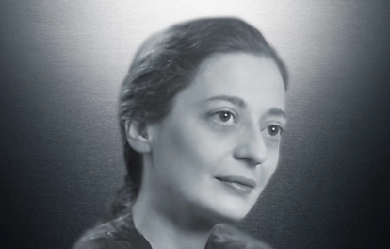
Helen Joy Davidman (18 April 1915 – 13 July 1960) was an American poet and writer. Often referred to as a child prodigy, she earned a master's degree from Columbia University in English literature at age twenty in 1935. For her book of poems, Letter to a Comrade, she won the Yale Series of Younger Poets Competition in 1938 and the Russell Loines Award for Poetry in 1939. She was the author of several books, including two novels.


William Harris Lloyd Roberts (31 October 1884– 28 June 1966) was a Canadian writer, poet, and playwright. He was born in Fredericton, New Brunswick, the son of noted Canadian poet Charles George Douglas Roberts and Mary Isabel Fenety. After an education by private tutors, he attended King’s Collegiate School then, in 1905, Fredericton High School. In 1903 he performed clerical work at McClure’s magazine. From 1904 until 1907 he was an assistant editor at the Outing magazine, based in New York City. He wrote short stories and poetry for various magazines, plus performing part-time newspaper work starting in 1911. On January 1, 1914, he was married to Helen Hope Farquhar Bolmain. The couple had a daughter, Patricia Bliss, before Helen died. In 1912, he became editor of immigration literature for the Canadian Department of Interior in Ottawa. Two years later, he served as a correspondent for the Timer and Grazing branch of the Interior Department in Ottawa. On August 15, 1914, he married his second wife, Lila White; the couple divorced shortly thereafter. After 1920 he retired from work in order to devote all of his time to writing fiction, drama, poetry, and special articles. From 1925 until 1939 he was a correspondent for the Christian Science Monitor, then he performed public relations for the Royal Canadian Mounted Police up to 1945. His third marriage in 1943 was to Julia Bristow, and they would have two daughters. Bibliography * England Over Seas (1914) * Come Quietly, Britain (1915) * Mother Doneby (1916) * The Book of Roberts (1923) * Along the Ottawa (1927) * I Sing of Life (1937) References Wikipedia—https://en.wikipedia.org/wiki/William_Harris_Lloyd_Roberts
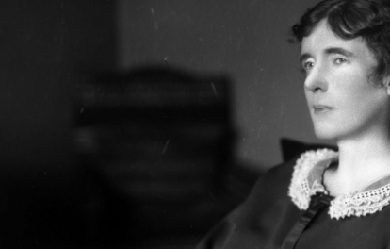
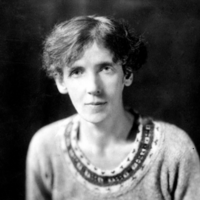
Dame Emilie Rose Macaulay, DBE (1 August 1881– 30 October 1958) was an English writer, most noted for her award-winning novel The Towers of Trebizond, about a small Anglo-Catholic group crossing Turkey by camel. The story is seen as a spiritual autobiography, reflecting her own changing and conflicting beliefs. Macaulay’s novels were partly-influenced by Virginia Woolf; she also wrote biographies and travelogues. Early years and education Macaulay was born in Rugby, Warwickshire the daughter of George Campbell Macaulay, a Classical scholar, and his wife, Grace Mary (née Conybeare). Her father was descended in the male-line directly from the Macaulay family of Lewis. She was educated at Oxford High School for Girls and read Modern History at Somerville College at Oxford University. Career Macaulay began writing her first novel, Abbots Verney (published 1906), after leaving Somerville and while living with her parents at Ty Isaf, near Aberystwyth, in Wales. Later novels include The Lee Shore (1912), Potterism (1920), Dangerous Ages (1921), Told by an Idiot (1923), And No Man’s Wit (1940), The World My Wilderness (1950), and The Towers of Trebizond (1956). Her non-fiction work includes They Went to Portugal, Catchwords and Claptrap, a biography of Milton, and Pleasure of Ruins. Macaulay’s fiction was influenced by Virginia Woolf and Anatole France. During World War I Macaulay worked in the British Propaganda Department, after some time as a nurse and later as a civil servant in the War Office. She pursued a romantic affair with Gerald O’Donovan, a writer and former Jesuit priest, from 1918 until his death in 1942. During the interwar period she was a sponsor of the pacifist Peace Pledge Union; however she resigned from the PPU and later recanted her pacifism in 1940. Her London flat was utterly destroyed in the Blitz, and she had to rebuild her life and library from scratch, as documented in the semi-autobiographical short story, Miss Anstruther’s Letters, which was published in 1942. The Towers of Trebizond, her final novel, is generally regarded as her masterpiece. Strongly autobiographical, it treats with wistful humour and deep sadness the attractions of mystical Christianity, and the irremediable conflict between adulterous love and the demands of the Christian faith. For this work, she received the James Tait Black Memorial Prize in 1956. Personal life Macaulay was never a simple believer in “mere Christianity”; however, and her writings reveal a more complex, mystical sense of the divine. That said, she did not return to the Anglican church until 1953; she had been an ardent secularist before and, while religious themes pervade her novels, previous to her conversion she often treats Christianity satirically, for instance in Going Abroad and The World My Wilderness. She never married, as a result of her lengthy and secret relationship with Gerald O’Donovan. They met in 1918 and the affair lasted until his death in 1942. She was created a Dame Commander of the Order of the British Empire (DBE) on 31 December 1957 in the 1958 New Years Honours. Macaulay was an active feminist throughout her life. Dame Rose Macaulay died on 30 October 1958, aged 77. Memorable quotes From The Towers of Trebizond: “Adultery is a meanness and a stealing, a taking away from someone what should be theirs, a great selfishness, and surrounded and guarded by lies lest it should be found out. And out of meanness and selfishness and lying flow love and joy and peace beyond anything that can be imagined.” First line of The Towers of Trebizond, cited by librarian Nancy Pearl in “Famous First Words: A Librarian Shares Favorite Literary Opening Lines,” [1] hosted by Steve Inskeep on NPR’s Morning Edition, 8 September 2004, as an example among “some notable opening lines that have made Pearl’s heart pound”. “Take my camel, dear”, said my Aunt Dot, as she climbed down from this animal on her return from High Mass. From Staying with Relations. Discussing the coat worn by a visitor, a character remarks: “Is rabbit fur disgusting because it’s cheap, or is it cheap because it’s disgusting?”

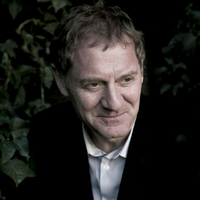
Sir Andrew Motion FRSL (born 26 October 1952) is an English poet, novelist, and biographer, who was Poet Laureate of the United Kingdom from 1999 to 2009. During the period of his laureateship, Motion founded the Poetry Archive, an online resource of poems and audio recordings of poets reading their own work. In 2012, he became President of the Campaign to Protect Rural England, taking over from Bill Bryson. Early life Motion was born on 26 October 1952 in London; his mother was Catherine Gillian Bakewell (known as Gillian) and his father Andrew Richard Michael Motion (known as Richard). The family moved to Stisted, near Braintree in Essex, when Motion was 12 years old. Motion went to boarding school from the age of seven joined by his younger brother. Most of the boy’s friends were from the school and when Motion was in the village he spent a lot of time on his own. He began to have an interest and affection for the countryside and he went for walks with a pet dog. Later he went to Radley College, where, in the sixth form, he encountered Peter Way, an inspiring English teacher who introduced him to poetry– first Hardy, then Philip Larkin, W. H. Auden, Heaney, Hughes, Wordsworth and Keats. When Motion was 17 years old, his mother had a horse riding accident and suffered a serious head injury requiring a life-saving neurosurgery operation. She regained some speech, but she was severely paralysed and remained in and out of coma for nine years. She died in 1978 and her husband died of cancer in 2006. Motion has said that he wrote to keep his memory of his mother alive and that she was a muse of his work. When Motion was about 18 years old he moved away from the village to study English at University College, Oxford; however, since then he has remained in contact with the village to visit the church graveyard, where his parents are buried, and also to see his brother, who lives nearby. At University he studied at weekly sessions with W. H. Auden, whom he greatly admired. Motion won the university’s Newdigate Prize and graduated with a first class honours degree. Career Between 1976 and 1980, Motion taught English at the University of Hull and while there, at age 24, he had his first volume of poetry published. At Hull he met university librarian and poet Philip Larkin. Motion was later appointed as one of Larkin’s literary executors which would privilege Motion’s role as his biographer following Larkin’s death in 1985. In Philip Larkin: A Writer’s Life, Motion says that at no time during their nine-year friendship did they discuss writing his biography and it was Larkin’s longtime companion Monica Jones who requested it. He reports how, as executor, he rescued many of Larkin’s papers from imminent destruction following his friend’s death. His 1993 biography of Larkin, which won the Whitbread Prize for Biography, was responsible for bringing about a substantial revision of Larkin’s reputation. Motion was Editorial Director and Poetry Editor at Chatto & Windus (1983–89), he edited the Poetry Society’s Poetry Review from 1980–1982 and succeeded Malcolm Bradbury as Professor of Creative Writing at the University of East Anglia. He is now on the faculty at the Johns Hopkins Writing Seminars. Laureateship Motion was appointed Poet Laureate on 1 May 1999, following the death of Ted Hughes, the previous incumbent. The Nobel Prize-winning Northern Irish poet and translator Seamus Heaney had ruled himself out for the post. Breaking with the tradition of the laureate retaining the post for life, Motion stipulated that he would stay for only ten years. The yearly stipend of £200 was increased to £5,000 and he received the customary butt of sack. He wanted to write “poems about things in the news, and commissions from people or organisations involved with ordinary life,” rather than be seen a 'courtier’. So, he wrote "for the TUC about liberty, about homelessness for the Salvation Army, about bullying for ChildLine, about the foot and mouth outbreak for the Today programme, about the Paddington rail disaster, the 11 September attacks and Harry Patch for the BBC, and more recently about shell shock for the charity Combat Stress, and climate change for the song cycle he finished for Cambridge University with Peter Maxwell Davies.” On 14 March 2002, as part of the 'Re-weaving Rainbows’ event of National Science Week 2002, Motion unveiled a blue plaque on the front wall of 28 St Thomas Street, Southwark, to commemorate the sharing of lodgings there by John Keats and Henry Stephens while they were medical students at Guy’s and St Thomas’ Hospital in 1815–16. In 2003, Motion wrote Regime change, a poem in protest at Invasion of Iraq from the point of view of Death walking the streets during the conflict, and in 2005, Spring Wedding in honour of the wedding of the Prince of Wales to Camilla Parker Bowles. Commissioned to write in the honour of 109-year-old Harry Patch, the last surviving “Tommy” to have fought in World War I, Motion composed a five-part poem, read and received by Patch at the Bishop’s Palace in Wells in 2008. As laureate, he also founded the Poetry Archive, an on-line library of historic and contemporary recordings of poets reciting their own work. Motion remarked that he found some of the duties attendant to the post of poet laureate difficult and onerous and that the appointment had been "very, very damaging to [his] work". The appointment of Motion met with criticism from some quarters. As he prepared to stand down from the job, Motion published an article in The Guardian that concluded, "To have had 10 years working as laureate has been remarkable. Sometimes it’s been remarkably difficult, the laureate has to take a lot of flak, one way or another. More often it has been remarkably fulfilling. I’m glad I did it, and I’m glad I’m giving it up– especially since I mean to continue working for poetry." Motion spent his last day as Poet Laureate holding a creative writing class at his alma mater, Radley College, before giving a poetry reading and thanking Peter Way, the man who taught him English at Radley, for making him who he was. Carol Ann Duffy succeeded him as Poet Laureate on 1 May 2009. Post-laureateship Motion is Chairman of the Arts Council of England’s Literature Panel (appointed 1996) and is also a Fellow of the Royal Society of Literature. In 2003, he became Professor of Creative Writing at Royal Holloway, University of London. Since July 2009, Motion has been Chairman of the Museums, Libraries and Archives Council (MLA) appointed by the Department for Culture, Media and Sport. He is also a Vice-President of the Friends of the British Library, a charity which provides funding support to the British Library. He was knighted in the 2009 Queen’s Birthday Honours list. He has been a member of English Heritage’s Blue Plaques Panel since 2008. Motion was selected as jury chair for the Man Booker Prize 2010 and in March 2010, he announced that he was working with publishers Jonathan Cape on a sequel to Robert Louis Stevenson’s Treasure Island. Entitled Silver, the story is set a generation on from the original book and was published in March 2012. In July 2010, Motion returned to Kingston-upon-Hull for the annual Humber Mouth literature festival and taking part in the Larkin 25 festival commemorating the 25th anniversary of Philip Larkin’s death. In his capacity as Larkin’s biographer and as a former lecturer in English at the University of Hull, Motion named an East Yorkshire Motor Services bus Philip Larkin. Motion’s debut play Incoming, about the war in Afghanistan, premièred at the High Tides Festival in Halesworth, Suffolk in May 2011. Motion also featured in Jamie’s Dream School in 2011 as the poetry teacher. In June 2012, he became the President of the Campaign to Protect Rural England. In March 2014 he was elected an Honorary Fellow at Homerton College, Cambridge. Motion won the 2015 Ted Hughes Award for new work in poetry for the radio programme Coming Home. The production featured poetry by Motion based on recordings he made of British soldiers returning from the wars in Iraq and Afghanistan. Work Motion has said of himself: “My wish to write a poem is inseparable from my wish to explain something to myself.” His work combines lyrical and narrative aspects in a “postmodern-romantic sensibility”. Motion says that he aims to write in clear language without tricks. The Independent describes the stalwart poet as the “charming and tireless defender of the art form”. Motion has won the Arvon Prize, the John Llewellyn Rhys Prize, Eric Gregory Award, Whitbread Prize for Biography and the Dylan Thomas Prize. Motion took part in the Bush Theatre’s 2011 project Sixty-Six Books, writing and performing a piece based upon a book of the King James Bible. Personal life Motion’s marriage to Joanna Powell ended in 1983. He was married to Jan Dalley from 1985 to 2009, divorcing after a seven-year separation. They had one son born in 1986 and twins, a son and a daughter, born in 1988. In 2009 he married Kyeong-Soo Kim. They live in Baltimore, Maryland. Selected honours and awards 1975: won the Newdigate prize for Oxford undergraduate poetry 1976: Eric Gregory Award 1981: wins Arvon Foundation’s International Poetry Competition with The Letter 1984: John Llewellyn Rhys Prize for Dangerous Play: Poems 1974–1984 1986: Somerset Maugham Award for The Lamberts 1987: Dylan Thomas Prize for Natural Causes 1999: appointed Poet Laureate for ten years 1994: Philip Larkin: A Writer’s Life, Whitbread Prize for Biography 2009: Knighthood 2014: Wilfred Owen Poetry Award Selected works Poetry collections * 1972: Goodnestone: a sequence. Workshop Press * 1976: Inland. Cygnet Press * 1977: The Pleasure Steamers. Carcanet * 1981: Independence. Salamander Press * 1983: Secret Narratives. Salamander Press * 1984: Dangerous Play: Poems 1974–1984. Salamander Press / Penguin * 1987: Natural Causes. Chatto & Windus * 1988: Two Poems. Words Ltd * 1991: Love in a Life. Faber and Faber * 1994: The Price of Everything. Faber and Faber * 1997: Salt Water Faber and Faber * 1998: Selected Poems 1976–1997. Faber and Faber * 2001: A Long Story. The Old School Press * 2002: Public Property. Faber and Faber * 2009: The Cinder Path. Faber and Faber * 2012: The Customs House. Faber and Faber * 2015: Peace Talks. Faber and Faber * 2015: Coming Home. Published by Andrew J Moorhouse at Fine Press Poetry http://www.finepresspoetry.com Criticism * 1980: The Poetry of Edward Thomas. Routledge & Kegan Paul * 1982: Philip Larkin. (Contemporary Writers series) Methuen * 1986: Elizabeth Bishop. (Chatterton Lectures on an English Poet) * 1998: Sarah Raphael: Strip!. Marlborough Fine Art (London) * 2008: Ways of Life: On Places, Painters and Poets. Faber and Faber Biography and memoir * 1986: The Lamberts: George, Constant and Kit. Chatto & Windus * 1993: Philip Larkin: A Writer’s Life. Faber and Faber * 1997: Keats: A Biography. Faber and Faber * 2006: In the Blood: A Memoir of my Childhood. Faber and Faber Fiction * 1989: The Pale Companion. Penguin * 1991: Famous for the Creatures. Viking * 2003: The Invention of Dr Cake. Faber and Faber * 2000: Wainewright the Poisoner: The Confessions of Thomas Griffiths Wainewright (biographical novel) * 2012: Silver. Jonathan Cape Edited works, introductions, and forewords * 1981: Selected Poems: William Barnes. Penguin Classics * 1982: The Penguin Book of Contemporary British Poetry with Blake Morrison. Penguin * 1994: Thomas Hardy: Selected Poems. Dent * 1993: New Writing 2 (With Malcolm Bradbury). Minerva in association with the British Council * 1994: New Writing 3 (With Candice Rodd). Minerva in association with the British Council * 1997: Penguin Modern Poets: Volume 11 with Michael Donaghy and Hugo Williams. Penguin * 1998: Take 20: New Writing. University of East Anglia * 1999: Verses of the Poets Laureate: From John Dryden to Andrew Motion. With Hilary Laurie. Orion. * 1999: Babel: New Writing by the University of East Anglia’s MA Writers. University of East Anglia. * 2001: Firsthand: The New Anthology of Creative Writing from the University of East Anglia. University of East Anglia * 2002: Paper Scissors Stone: New Writing from the MA in Creative Writing at UEA. University of East Anglia. * 2001: The Creative Writing Coursebook: Forty Authors Share Advice and Exercises for Fiction & Poetry. With Julia Bell. Macmillan * 2000: John Keats: Poems Selected by Andrew Motion. Faber and Faber * 2001: Here to Eternity: An Anthology of Poetry. Faber and Faber * 2002: The Mays Literary Anthology; Guest editor. Varsity Publications * 2003: 101 Poems Against War . Faber and Faber (Afterword) * 2003: First World War Poems. Faber and Faber * 2006: Collins Rhyming Dictionary. Collins * 2007: Bedford Square 2: New Writing from the Royal Holloway Creative Writing Programme. John Murray Ltd. References Wikipedia—https://en.wikipedia.org/wiki/Andrew_Motion

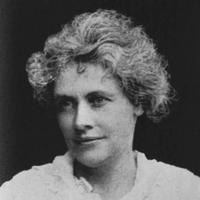
Florence Randall Livesay, daughter of Stephen and Mary Louisa Randal, was born at Compton, P. Q., and educated at Compton Ladies' College, now King's Hall. She taught for one year in a private school in New York, and subsequently for seven years was a member of the staff of the Evening Journal, Ottawa,–editor of the Woman's Page. In 1902, the Hon. Joseph Chamberlain requested Canada to send some teachers to the Boer Concentration Camps and Miss Randal, offering her services, was one of the forty chosen. She remained for one year and then returned to Canada, locating at Winnipeg. She joined the staff of the Winnipeg Telegram, and three years later that of the Manitoba Free Press. For several years she edited the Children's Department of the latter, but now writes as a 'free lance.' In 1908, she married Mr. J. Fred. B. Livesay of Winnipeg, Manager and Secretary of the Western Associated Press, Limited, and is now the mother of two girls. Of recent years, Mrs. Livesay has contributed poems, short stories and articles to Canadian and American magazines and journals, and a volume of her verse, entitled Songs of Ukraina is now being published by J. M. Dent & Sons. Mrs. Livesay's folk songs translated from the Ruthenian are unusual and notable, but her poetical gift is quite as discernible in her other poems. She has the imagination and the practiced touch of the artist., daughter of Stephen and Mary Louisa Randal, was born at Compton, P. Q., and educated at Compton Ladies' College, now King's Hall. She taught for one year in a private school in New York, and subsequently for seven years was a member of the staff of the Evening Journal, Ottawa,–editor of the Woman's Page. In 1902, the Hon. Joseph Chamberlain requested Canada to send some teachers to the Boer Concentration Camps and Miss Randal, offering her services, was one of the forty chosen. She remained for one year and then returned to Canada, locating at Winnipeg. She joined the staff of the Winnipeg Telegram, and three years later that of the Manitoba Free Press. For several years she edited the Children's Department of the latter, but now writes as a 'free lance.' In 1908, she married Mr. J. Fred. B. Livesay of Winnipeg, Manager and Secretary of the Western Associated Press, Limited, and is now the mother of two girls. Of recent years, Mrs. Livesay has contributed poems, short stories and articles to Canadian and American magazines and journals, and a volume of her verse, entitled Songs of Ukraina is now being published by J. M. Dent & Sons. Mrs. Livesay's folk songs translated from the Ruthenian are unusual and notable, but her poetical gift is quite as discernible in her other poems. She has the imagination and the practiced touch of the artist.


Charles Mair (September 21, 1838– July 7, 1927) was a Canadian poet and journalist. He was a fervent Canadian nationalist noted for his participation in the Canada First movement and his opposition to Louis Riel during the two Riel Rebellions in western Canada. Life Mair was born at Lanark, Upper Canada, to Margaret Holmes and James Mair. He attended Queen’s University but did not graduate. On leaving college, he became a journalist. In Ottawa in 1868, Mair was introduced by civil servant and writer Henry Morgan to young lawyers George Denison, William Foster, and Robert Haliburton. “Together they organized the overtly nationalistic Canada First movement, which began as a small social group.” Mair “represented the Montreal Gazette during the first Riel Rebellion, and was imprisoned and narrowly escaped being shot by the rebels.” Mair was a Freemason Mair "was an Officer of the Governor-General’s Body Guard during the second Riel rebellion in 1885, and was later employed in the Canadian civil service in the West." He died in Victoria, British Columbia. Writing Mair published the first book of poetry in post-Confederation Canada, 1868's Dreamland and Other Poems. “Negligible as verse,” says The Canadian Encyclopedia, "the volume gained interest when Mair escaped after being captured by Louis Riel during the Red River disturbances of 1869-70.” The Dictionary of Canadian Biography (DCB) states that Dreamland “demonstrates a conventional colonial approach to poetry. Such poems as 'August’ succeed in their attention to natural detail: descriptions of the blueflies, the milkmaids, and the 'ribby-lean’ cattle in parched fields anticipate the mature nature poetry of Archibald Lampman. But too often he wrote not of the timberlands he knew but of a dreamland weakly modelled upon the romantic flights of Keats.” However, the book was praised by “the established poet Charles Sangster, who referred to Canada’s sophisticated literary tradition as one that was habitually overlooked in the popular press.” Writing later in the Ottawa Journal, William Wilfred Campbell saw Dreamland as a precursor to the nature poetry later popularized in Canada by the Confederation Poets: “The thirty-three poems constitute the first attempt to deal with Canadian nature, in the manner of Keats and the other classic poets, and many of them in theme and treatment are similar to the verse of Lampman and Roberts.... And there are strong evidences in Mair’s work that he influenced these poets to a great extent.” Mair published Tecumseh, a historical drama mainly in blank verse dealing with the War of 1812, in 1886. Canadian critic Alan Filewood wrote of the political and philosophical ideas expressed by Mair in the poem: Mair’s projection of Canadian nationhood is embodied in the character of Lefroy, a Byronesque poet who flees civilization to seek solace in nature’s genius. He learns– tragically– from the British General Brock that natural law finds its outward form in the monarchic principle, and from the Indian chieftain Tecumseh that nature must be defended against the perversion of American materialism. The dying Tecumseh legitimizes the proto-(Anglo) Canadians as the natural guardians of the land, and Canadian manhood finds mature expression in a race of armed poets.(...) Mair looked to the day when the dominions would assume the responsibilities of adulthood: Then shall a whole family of young giants stand 'Erect, unbound, at Britain’s side-' her imperial offspring oversea, the upholders in the far future of her glorious tradition, or, should exhaustion ever come, the props and supports of her declining years. The DCB calls Tecumseh "a major contribution to our 19th-century literary heritage, wherein the War of 1812 is the central event of Canadian history. Among the many literary treatments of this war, including works by Sangster, John Richardson, and Sarah Anne Curzon... Tecumseh stands as the most accomplished." The Canadian Encyclopedia says that the poem’s “blank verse is pedestrian and untheatrical”, but it also tells us that “Tecumseh was important in the development of Canadian drama. It presents a vision of Canada as a co-operative enterprise in contrast with the self-seeking individualism of the United States.” Recognition Mair was elected a Fellow of the Royal Society of Canada in 1889. In 1937 he was designated a Person of National Historic Significance. Canadian folksinger Gordon Lightfoot adapted a line from Tecumseh, “There was a time on this fair continent,” for the first line in his 1967 historical ballad, “The Canadian Railroad Trilogy” ("There was a time in this fair land when the railroad did not run"). Publications * Dreamland and Other Poems. London: S. Low, 1868. Montreal: Dawson, 1868, * Tecumseh. Toronto: Hunter, Rose & Co., 1886. London: Chapman & Hall, 1886. * Through the Mackenzie Basin: A Narrative of the Athabasca and Peace River Treaty Expedition of 1899 . London: Simpkin, Marshall, Hamilton, Kent & Co., 1903. References Wikipedia—https://en.wikipedia.org/wiki/Charles_Mair
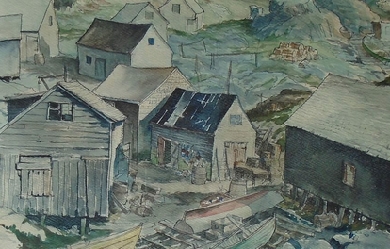
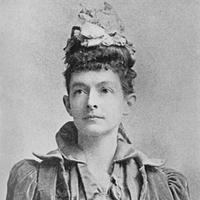
Susan Frances Harrison née Riley (February 24, 1859– May 5, 1935) (a.k.a. Seranus) was a Canadian poet, novelist, music critic and music composer who lived and worked in Ottawa and Toronto. Life Susie Frances Riley was born in Toronto of Irish-Canadian ancestry, the daughter of John Byron Riley. She studied music with Frederic Boscovitz, at a private school for girls in Toronto, and later in Montreal. She reportedly began publishing poetry, in the Canadian Illustrated News, at 16 under the pseudonym “Medusa.” After completing her education, she worked as a pianist and singer. In 1880 she married organist John W. F. Harrison, of Bristol, England, who was the organist of St. George’s Church in Montreal. The couple had a son and a daughter. The Harrisons lived in Ottawa in 1883, when Susie Harrison composed the song “Address of Welcome to Lord Lansdowne” to celebrate the first public appearance of the new Governor General, the Marquess of Lansdowne. In 1887 the Harrisons moved to Toronto, where John Harrison became organist and choirmaster of St. Simon the Apostle, and Susan Harrison began a literary career under the pseudonym “Seranus” (a misreading of her signature, “S. Frances”), soon publishing articles in “many of the leading journals and periodicals.” She wrote a number of songs published in the United States and England under the name Seranus, and published other songs in England under the name, Gilbert King. She was the music critic of The Week from December 1886 to June 1887 under her pen-name of Seranus. She wrote the “Historical sketch on Canadian music” for the 1898 Canada: An Encyclopedia of the Country. Susan Harrison was considered an authority on folk music, and often lectured on the subject. She used traditional Irish melodies in her String Quartet on Ancient Irish Airs, and French-Canadian music in her 1887 Trois Esquisses canadiennes (Three Canadian Sketches), ‘Dialogue,’ ‘Nocturne,’ and 'Chant du voyageur’. She also incorporated French-Canadian melodies in her three-act opera, Pipandor (with libretto by F.A. Dixon of Ottawa). Her String Quartet on Ancient Irish Airs, is likely the first string quartet composed in Canada by a woman. In 1896 and 1897 she presented a series of well-received lectures in Toronto on "The Music of French Canada. For 20 years Harrison was the principal of the Rosedale branch of the Toronto Conservatory of Music. During the 1900s she contributed to and edited the Conservatory’s publication Conservatory Monthly, and contributed to its successor Conservatory Quarterly Review. She wrote the article on “Canada” for the 1909 Imperial History and Encyclopedia of Music. In addition, she wrote at least six books of poetry, and three novels. Writing Poetry Harrison’s musical training is reflected in her poetry: “she was adept in her handling of the rhythmic complexities of poetic forms such as the sonnet and the villanelle. Like other Canadian poets of the late nineteenth century, her prevailing themes include nature, love, and patriotism. Her landscape poetry, richly influenced by the works of Charles G.D. Roberts and Archibald Lampman, paints the Canadian wilderness as beguilingly beautiful yet at the same time mysterious and distant.” Harrison was a master of the villanelle. The villanelle was a French verse form that had been introduced to English readers by Edmund Gosse in his 1877 essay, “A Plea for Certain Exotic Forms of Verse”. Novels Her two novels “articulate a fascination with a heavily mythologized Quebec culture that Harrison shared with many English-speaking Canadians of her time... characterized by a gothic emphasis on horror, madness, aristocratic seigneurial manor houses, and a decadent Catholicism.” “Harrison writes elegiacally of a regime whose romantic qualities are largely the creation of an Upper Canadian quest for a distinctive historical identity.” Recognition Harrison experienced a decline in reputation in her lifetime. In 1916 anthologist John Garvin called her “one of our greater poets whose work has not yet had the recognition in Canada it merits.”. "By 1926, Garvin describes her merely as 'one of our distinctive poets’.” The Dictionary of Literary Biography wrote of Susan Frances Harrison, in 1990, that “Harrison’s unpublished work has not been preserved, her published work is out of print and difficult to obtain, and her once-substantial position in the literary life of her country is now all but forgotten.” Publications Selected songs * Song of Welcome. * Pipandor. opera * ‘Trois Esquisses canadiennes: ’Dialogue,' ‘Nocturne,’ 'Chant du voyageur’. 1887. * Quartet on Ancient Irish Airs. Poetry * Four Ballads and a Play. Toronto: Author, 1890. * Pine, Rose and Fleur De Lis. Toronto: Hart, 1891. * In Northern Skies and Other Poems. Toronto: Author, 1912. * Songs of Love and Labor. Toronto: Author, 1925. * Later Poems and New Villanelles. Toronto: Ryerson, 1928. * Penelope and Other Poems. Toronto: Author, 1934. * Bibliographical information on poems from Wanda Campbell, Hidden Rooms. Prose * Crowded Out and Other Sketches. Ottawa: Evening Journal, 1886. * The Forest of Bourg-Marie, novel. Toronto: G.N. Morang, 1898. * Ringfield, novel. London: Hodder & Stoughton, 1914. Edited * Canadian Birthday Book. Toronto: Robinson, 1887. Poetry anthology. Articles * “Historical sketch of music in Canada,” Canada: An Encyclopedia of the Country, vol 4, J.C. Hopkins ed., Toronto, 1898. * “Canada,” The Imperial History and Encyclopedia of Music, vol 3: History of Foreign Music, W.L. Hubbard ed., New York ca 1909. Discography * Harrison’s piano music has been recorded and issued on media, including: * Keillor, Elaine. By a Canadian Lady Piano Music 1841-1997 Carleton Sound * Keillor, Elaine. Piano Music by Torontonians (1984) References Wikipedia—https://en.wikipedia.org/wiki/Susie_Frances_Harrison
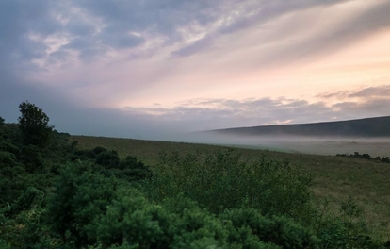
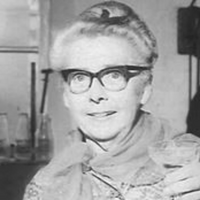
Kathleen Faragher (1904–1974) was the most significant and prolific Manx dialect author of the mid twentieth century. She is best known for her poems first published in the Ramsey Courier and collected into five books published between 1955 and 1967. She was also a prolific short story writer and playwright. Her work is renowned for its humour born of a keen observation of Manx characters, and for its evocative portrayal of the Isle of Man and its people. Life Kathleen Faragher was born in 1904 in Ramsey, Isle of Man, to Joseph and Catherine Anne Faragher, owners of a grocer and provision merchant business on Approach Road. Kathleen was the youngest of five children: Laurence (who died in Gibraltar in 1944 during WWII), Fred (later manager of Martin’s Bank, Peel), Joseph (who took over the family business but died in 1946), Evelyn (who emigrated to Auckland, New Zealand, where she died in 1949) and herself. Kathleen Faragher was raised in Ramsey until about 1924, when she moved to London to take up a business career. After 25 years working in London, ill-health forced her into early retirement, whereupon she returned to live on the Isle of Man in October 1949. Faragher lived first in Ramsey but eventually moved to Maughold, finally coming to live near to the Dhoon Church in Glen Mona. Poetry Faragher’s first poem, 'Blue Point’, was published in the Ramsey Courier on 14 October 1949. The poem was written whilst in Kent and sent to the paper, who surprised Faragher in accepting it, although it was not published until she had returned to live on the island. This poem was different in style to Faragher’s subsequent work and it was only published in her third book of poetry, Where Curlews Call, in 1959, by which time it had been substantially rewritten. Her next poem, 'Maughold Head’, was published at the start of February 1950, after which her poems were published regularly in the Ramsey Courier. Her first published poem in the Anglo-Manx dialect was 'A Lament’, which appeared in September 1950. Her poems were quickly picked up as special evocations of the Isle of Man and they were recited at meetings of Manx Societies in England alongside poems by the Manx National Poet, T. E. Brown, as early as November 1951. Her poems, 'Maughold Head’ and 'In Exile’, were set to music by C. Sydney Marshall and had been cut to record by February 1960. Her first book of poems, Green Hills by the Sea, was published in February 1955 by The Ramsey Courier Ltd. The book’s title is a reference to the popular song, 'Ellan Vannin’, composed from a poem by Eliza Craven Green. The book was described as displaying Faragher’s “deep insight into Manx feelings and a nostalgic love of the old folk and ways” by George Bellairs. The collection opened with 'Land of My Birth’, which she described as “the greatest compliment she can pay to the Manx people” and with which she usually ended her recitals. I love this purple-misted Isle, This land where I was born. The gorse-clad hills and bracken tops, The fields of waving corn. [...] But best of all I love to hear The gentle, lilting voice Of kindly Manx folk greeting me: It makes my heart rejoice, To feel once more the friendly hand, To hear the welcome warm, To look into each smiling face And know I have come home. Her second collection, This Purple-Misted Isle, was published in October 1957. The title was another reference to her forebears of Manx literature, this time to T. E. Brown, a reference continued within the collection with Faragher’s 'The Immortal “Kitty”' paying homage to Brown’s 'Kitty o’ the Sherragh Vane’ from his Fo’c’s’le Yarns. The collection had a Foreword by the Lieutenant Governor, Ambrose Flux Dundas. It proved to be very popular, having to be reprinted by the end of the year, and by the end of 1959 a third print had also almost sold out. This collection included 'The Homecomer’, which displays her distinctive Anglo-Manx conversational style: [...] “It isn’ me dyin’ that I min’, boy,” She said as she sat by her bed; “I’d go peaceful if it wasn’ for thinkin’ Ye’ll be managin’ so maul when I’m dead.” An’ Billy sthroked her cheek– so the tale goes – An’ whispered all lovin’ an’ low, “Dunt be grievin’, Nellie Kate; theer’s no need to gel, To worry about me when yer go! For theer’s the nices’ li’l wumman in Laxaa That I’ve had me eye on this las’ bit; She’ll look after me well, I can tell yer, So take yer res’, Nellie Kate, an’ dunt fret!” My gough! She gorrup from that bed theer Like an arra shot straight from the bow! Ay! an’ Billy himself was years buried ‘Fore herself in the en’ had to go! [...] By 1959 Faragher’s poems had been heard on BBC Radio a number of times, recited both by herself and by others. It was in October of that year that her third collection was released, Where Curlews Call, bearing a perceptive Preface by Sir Ralph Stevenson: “Our mother tongue has been overlaid by a stereotyped accent [...]. The Manx lilt [...] is all too rapidly fading. She does her best in these poems to keep it alive and at the same times gives a warm and human picture of our farms and crofts and the kindly folk who live in them. For this, if for nothing else, she has earned our gratitude.” Her subsequent collections of poetry were These Fairy Shores (1962) and English and Manx Dialect Poems (1967). Faragher’s poems can be predominantly categorised into two types: light-humoured dialect vignettes or lyrical descriptions of the Isle of Man. Her poems are distinctive in Manx literature in being prevailingly from or of a female perspective and based within the family or home environment. Theatre and prose As early as 1951 Faragher had been experimenting with extending her conversational monologue Anglo-Manx poems into theatrical dialogues for performance. In 1964 four such 'character sketches’ were published as Kiare Cooisghyn. As was distinctive of her dialect poetry, all of these pieces were written for middle-aged or elderly female characters and used a very tender humour born of a close observation of Manx character. Something of this is shown in the first 'duologue’ from the collection, 'The Caffy’ in which two women discuss the new café in town: [...] Mrs K. An’ what like was the china? Gran’ mighty I suppose? Mrs C. Aw! somethin’ awful that was! Rale indacent, in fac’. A whole lorra naked childher flyin’ about on the plates shootin’ bows an’ arras. Mrs K. Aw! them 'ud be l’il Cupids. Mrs C. Li’l Cupids? Li’l divils, more like! Why wan o’ them was the dead spit o’ that young dirt Kermid’s yandher! Ay! skeetin’ up at me through the gravy he was– enough to turn yer! [...] She came to concentrate on prose towards the end of her life, publishing By The Red Fuchsia Tree in 1967, a collection of short stories interspersed with reprints of poems from her earlier collections. This was followed by a long series of short dialect stories published under the pseudonym, “Kirree Ann”, in the Ramsey Courier at a rate of almost one a week over the last two years of her life. This output of nearly 100 short stories makes her the most prolific Manx short story writer of the twentieth Century. Death and legacy Kathleen Faragher died in 1974, on the same day as her final story was published in the Ramsey Courier. She was buried in the family plot in Maughold churchyard, a graveyard also associated with other important Manx writers such as T. E. Brown, Hall Caine, Cushag and William Kennish. Six years after her death, her friend, Constance Radcliffe, the leading authority on the local history of Ramsey and Maughold, wrote of Faragher’s work that: “In all her works she expressed her affection for a Manx way of life which has only just disappeared, her kindly humour based on acute observation of people’s idiosyncrasies, and her deep and abiding love of the island itself.” Her work continues to be popularly performed in recitals on the Isle of Man, despite none of her books having been republished after her death, and her “Kirree Ann” stories having never been collected. In 2015 a project to record the memories of those who knew and remember Faragher was launched. Funded by Culture Vannin, it is envisioned to tie in with the Culture Vannin oral history programme, but also to reach more widely to collect unpublished works, memorabilia or other artefacts that might be uncovered. In introducing the initiative, the project organiser gave an estimation of Faragher’s work in relation to Manx literature: “the importance of her work to the Isle of Man would be hard to overestimate. It would be a tragedy for Manx culture if we did not do everything in our power to preserve all we can of her memory.” Publications * Green Hills by the Sea. Ramsey: The Ramsey Courier Ltd. 1954. * This Purple-Misted Isle. Ramsey: The Ramsey Courier Ltd. 1957. * Where Curlews Call. Ramsey: The Ramsey Courier Ltd. 1959. * These Fairy Shores. Ramsey: The Ramsey Courier Ltd. 1962. * Kiare Cooisghyn. Ramsey: The Ramsey Courier Ltd. 1964. * English and Manx Dialect Poems. Douglas: Norris Modern Press. 1967. * By The Red Fuchsia Tree. Douglas: The Norris Modern Press. 1967. References Wikipedia—https://en.wikipedia.org/wiki/Kathleen_Faragher
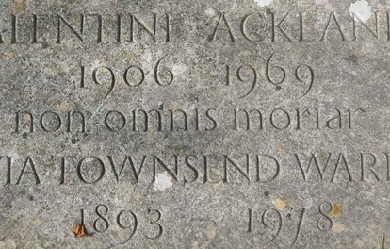
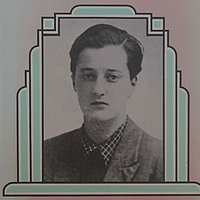
Valentine Ackland (20 May 1906– 9 November 1969) was an English poet, an important figure in the emergence of modernism in twentieth-century British poetry. Life Ackland was born Mary Kathleen Macrory Ackland to Robert Craig Ackland and his wife Ruth Kathleen (née Macrory), and nicknamed “Molly” by her family. With no sons born to the family, Valentine’s father, a West End London dentist, worked at making a symbolic son of Molly, teaching her to shoot rifles and to box. This attention to Molly made her sister Joan Alice Elizabeth (b. 1898) immensely jealous. Older by eight years, Joan psychologically tormented and physically abused Molly as a way of unleashing her jealousy and anger. Molly received an Anglo-Catholic upbringing in Norfolk and a convent school education in London. In 1925 at the age of nineteen, she impetuously married Richard Turpin, a homosexual youth who was unable to consummate their marriage. Upon her marriage, she was also received into the Catholic church, a religion that she later abandoned, returned to, and then abandoned again in the last decade of her life. In less than a year, she had her marriage to Turpin annulled, and, despite numerous pleas from her family and much psychological pressure from them, never returned to a serious relationship with a man again. Alert to social mores of her day, she became aware of societal patterns of male privilege and female submission set about challenging the female gender identifications expected of her. She took to wearing men’s clothing, cut her hair in a short style called the Eton crop, and was at times mistaken for a handsome young boy. She changed her name to the androgynous Valentine Ackland when she decided to become a serious poet in the late 1920s. Her poetry appeared in British and American literary journals during the 1920s to the 1940s, but Ackland deeply regretted that she never became a noted and widely read poet. In this regard, much of her poetry was published posthumously, and she received little attention from critics until a revival of interest in her work in the 1970s. In 1930, Ackland was introduced to the short story writer and novelist Sylvia Townsend Warner, with whom she had a lifelong relationship, albeit tumultuous at times given Ackland’s increasing alcoholism and infidelities. Warner was twelve years older than Ackland, and the two lived together until Ackland’s death from breast cancer in 1969. Warner went on to outlive Ackland by nine years, dying in 1978. The pair were together for thirty-nine years. Ackland’s reflections upon her relationship with Warner and the former’s long affair with American heiress and writer Elizabeth Wade White (1908–1994), were posthumously published in For Sylvia: An Honest Account (1985). Ackland was a highly emotional woman prone to numerous self-doubts and shifts in emotions and intellectual interests. She was responsible for involving Warner in membership in the Communist Party in the 1930s and in 1937 she visited Valencia and Benicàssim within the framework of the Spanish Civil War as well as numerous socialist and pacifist activities. The two women’s involvement in the Communist Party came under investigation by the British government in the late 1930s and remained an open file until 1957, when the investigation was halted. Ackland and Warner supported the Republican cause during the Spanish Civil War, and Ackland criticised the British government for its indifference to the “sufferings of the Spanish people at the grass-roots level” in her poem "Instructions from England, 1936". Note nothing of why or how, enquire no deeper than you need into what set these veins on fire, Note simply that they bleed. After World War II, Ackland turned her attention to confessional poetry and a memoir concerning her relationship with Warner and its many emotional issues as Ackland pursued involvements with other women. At first, Warner was tolerant with her younger lover’s dalliances, but the seriousness and length of Ackland’s relationship with Elizabeth Wade White was distressing to Warner and also pushed her relationship with Ackland to the edge. Ackland’s distresses at loving two women simultaneously and of endeavouring to balance her feelings for each woman with the responsibilities and commitments of her primary relationship with Warner are presented openly in Ackland’s poetry and in her memoir of this period. Ackland was struggling with additional doubts and conflicts during this period as well. She continued to battle her alcoholism, and she was undergoing shifts in her political and religious alliances. Doubts about her sexual identity and her identity as a poet as well as about her Christian faith and her political convictions are evident in her poetry. In 1934, Ackland and Warner produced a volume of poetry, “Whether a Dove or a Seagull” that was an unusual and democratic experiment in writing as none of the poems is ascribed to either author. The volume was also an attempt by Warner to introduce Ackland to publication since Warner had an already established reputation as a novelist, and her work was widely read in the 1930s. The volume was controversial for its frank discussion of lesbianism at a time and in a society in which lesbianism was regarded as deviant and immoral behaviour. In 1937, Ackland and Warner moved from rural Dorset to a house near Dorchester. Both became involved with Communist ideals and issues, with Ackland writing a column called “Country Dealings” concerning rural poverty for the “Daily Worker” and the “Left Review.” In 1939, the two women attended the American Writers Congress in New York City to consider the loss of democracy in Europe and returned when World War II broke out. Ackland’s poetry of this period attempted to capture the political dynamics she saw at work, but she had a difficult time as a poet mastering the craft of combining political polemics with her natural tendency toward lyrical expression. In a similar vein, her distress over the loss of democracy in Europe became a broader identification with Existentialism and the sense that the human condition itself was hopeless. Death Ackland died on 9 November 1969 from breast cancer that had metastasised to her lungs. She was buried together with Sylvia Townsend Warner in St Nicholas’s churchyard at Chaldon Herring with the inscription from Horace Non omnis moriar (Ode III.30, “I shall not wholly die”) on her gravestone. Critical assessment Ackland’s poetry—largely neglected after the 1940s—came into a resurgence of interest with the emergence of both women’s studies and of lesbian literature. Contemporary critical reaction finds much to value in Ackland’s poetry and confessional writings, which are of historical interest to the development of self-reflective, modernist poetry, and to the political and cultural issues of the 1930s and 1940s. One example of a recent critical analysis is Wendy Milford’s 1988 study, This Narrow Place: Sylvia Townsend Warner and Valentine Ackland. With regard to her self-reflection as a poet, Ackland exhibits themes and explorations similar to poets like Sylvia Plath and Anne Sexton. Of interest, too, is Ackland’s explorations of terminal illness as her life was drawing to a close from cancer. In her later years, Ackland turned from Catholicism to Quaker beliefs and also to involvement with issues of environmentalism. In overall assessment, Milford considers the two-minds at work in Ackland’s work. She cites as examples Ackland’s focus on optimism and dread, the longing for emotional closeness and the fear of intimacy, self-assertion and self-negation, the search for privacy and solitude amidst the longing for connection and social acceptance as a lesbian and as a noteworthy poet. In this regard, Ackland shares much thematically—though not in artistic achievement—with metaphysical poets like John Donne and Philip Larkin in the effort to see personal experience from multiple perspectives and never fully resting with one perspective or another. A contemporary examination of Ackland’s poetry and essays was published by Carcanet Press in 2008 titled Journey from Winter: Selected Poems. The volume is edited by Frances Bingham, who also provides a contextual and critical introduction. Bibliography * Whether a Dove or a Seagull (1934) volume of poetry with Sylvia Townsend Warner * Twenty-Eight Poems (1957) privately printed in London * Later Poems by Valentine Ackland (1970) * The Nature of the Moment (1973) * Further Poems of Valentine Ackland (1978) * For Sylvia: An Honest Account (1985) a memoir of Ackland’s relationship with Sylvia Townsend Warner * This Narrow Place: Sylvia Townsend Warner and Valentine Ackland 1931–1951, by Wendy Mulford (1988) * Jealousy in Connecticut, by Susanna Pinney (1998) References Wikipedia—https://en.wikipedia.org/wiki/Valentine_Ackland


Agnes Ethelwyn Wetherald was born of English-Quaker parents at Rockwood, Ontario, April 26th, 1857. Her father was the late Rev. William Wetherald, who founded the Rockwood Academy about the middle of the last century, and was its principal for some years. He was a lover of good English, spoken and written, and his talented daughter has owed much to his careful teaching. He was the teacher whom the late James J. Hill, the railway magnate, had held in such grateful remembrance. Additional education was received by Miss Wetherald at the Friends' Boarding School, Union Springs, N.Y., and at Pickering College. Miss Wetherald began the writing of poetry later in life than most poets and her first book of verse, The House of the Trees and Other Poems, did not appear until 1895. This book at once gave her high rank among women poets. Prior to this, she had collaborated with G. Mercer Adam on writing and publishing a novel, An Algonquin Maiden, and had conducted the Woman's Department in The Globe, Toronto, under the nom de plume, 'Bel Thistlewaite.' In 1902, appeared her second volume of verse, Tangled in Stars, and, in 1904, her third volume, The Radiant Road. In the autumn of 1907, a collection of Miss Wetherald's best poems was issued, entitled, The Last Robin: Lyrics and Sonnets. It was warmly welcomed generally, by reviewers and lovers of poetry. The many exquisite gems therein so appealed to Earl Grey, the then Governor-General of Canada, that he wrote a personal letter of appreciation to the author, and purchased twenty-five copies of the first edition for distribution among his friends. For years Miss Wetherald has resided on the homestead farm, near the village of Fenwick, in Pelham Township, Weland county, Ontario, and there in the midst of a large orchard and other rural charms, has dreamed, and visioned, and sung, pouring out her soul in rare, sweet songs, with the naturalness of a bird. And like a bird she has a nest in a large willow tree, cunningly contrived by a nature-loving brother, where her muse broods contentedly, intertwining her spirit with every aspect of the beautiful environment.
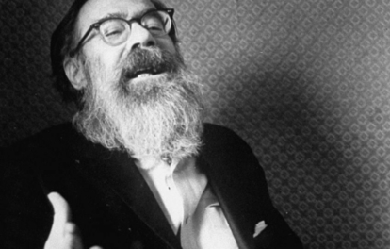
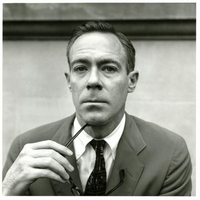
John Allyn Berryman (October 25, 1914– January 7, 1972) was an American poet and scholar, born in McAlester, Oklahoma. He was a major figure in American poetry in the second half of the 20th century and was considered a key figure in the Confessional school of poetry. His best-known work is The Dream Songs. Life and career John Berryman was born John Allyn Smith, Jr. in Oklahoma where he was raised until the age of ten, when his father, John Smith, a banker, and his mother, Martha (also known as Peggy), a schoolteacher, moved to Tampa, Florida. In 1926, in Florida, when the poet was eleven years old, his father shot and killed himself, Berryman was haunted by his father’s death for the rest of his life and would later write about his struggle to come to terms with it in his book The Dream Songs. In "Dream Song #143", he wrote, "That mad drive [to commit suicide] wiped out my childhood. I put him down/while all the same on forty years I love him/stashed in Oklahoma/besides his brother Will". In "Dream Song #145", he also wrote the following lines about his father: he only, very early in the morning, rose with his gun and went outdoors by my window and did what was needed. I cannot read that wretched mind, so strong & so undone. I've always tried. I–I'm trying to forgive whose frantic passage, when he could not live an instant longer,in the summer dawn left Henry to live on. Similarly, in Dream Song #384, Berryman wrote: The marker slants, flowerless, day's almost done, I stand above my father's grave with rage, often, often before I've made this awful pilgrimage to one who cannot visit me, who tore his page out: I come back for more, I spit upon this dreadful bankers grave who shot his heart out in a Florida dawn After his father’s death at the rear entrance to Kipling Arms, where the Smiths rented an apartment, the poet’s mother, within months, married John Angus McAlpin Berryman in New York City. The poet was renamed John Allyn McAlpin Berryman. Berryman’s mother also changed her first name from Peggy to Jill. Although his stepfather would later divorce his mother, Berryman and his stepfather stayed on good terms. With both his mother and stepfather working, his mother decided to send him away to the South Kent School, a private boarding school in Connecticut. Then Berryman went on to college at Columbia College where he was president of the Philolexian Society, joined the Boar’s Head Society, edited the Columbia Review, and studied under the literary scholar and poet Mark Van Doren. Berryman would later credit Van Doren with sparking his interest in writing poetry seriously. For two years, Berryman also studied overseas at Clare College, Cambridge, on a Kellett Fellowship, awarded by Columbia. He graduated in 1936. Regarding Berryman’s earliest success in poetry, the Norton Anthology of Modern Poetry editors note that "Berryman’s early work formed part of a volume entitled Five Young American Poets, published by New Directions in 1940". One of the other young poets included in the book was Randall Jarrell. Berryman would soon publish some of this early verse in his first book, also with New Directions Publishing, simply titled Poems, in 1942. However, his first mature collection of poems, The Dispossessed, appeared six years later, published by William Sloane Associates. The book received largely negative reviews from poets like Randall Jarrell who wrote, in The Nation, that Berryman was "a complicated, nervous, and intelligent [poet]" whose poetry in The Dispossessed was too derivative of W. B. Yeats. Berryman would later concur with this assessment of his early work, stating, “I didn’t want to be like Yeats; I wanted to be Yeats.” In October 1942, Berryman married Eileen Mulligan (later Simpson) in a ceremony at St. Patrick’s Catherdral, with poet Mark Van Doren as his best man. The pair moved to Beacon Hill, where Berryman lectured at Harvard. The marriage ended in 1953 (a divorce was formalized in 1956), when Simpson finally grew weary of tolerating Berryman’s affairs and acting as “net-holder” throughout his self-destructive personal crises. Simpson would memorialize her time with Berryman and his circle in her 1982 book Poets in Their Youth. In 1947, Berryman started an affair with a married woman named Chris, documented in a long sonnet sequence that he refrained from publishing, in part, because publication of the sonnets would have revealed the affair to his wife. However, he did eventually decide to publish the work, titled Berryman’s Sonnets, in 1967. The work included over one hundred sonnets. In 1950, Berryman published a biography of the fiction writer and poet Stephen Crane whom he greatly admired becoming, “the only biography by a leading American poet of the great American writer, Stephen Crane.” This book was followed by his next significant poem, Homage to Mistress Bradstreet (1956), which featured illustrations by the artist Ben Shahn and was Berryman’s first poem to receive “national attention” and a positive response from critics. Edmund Wilson wrote that it was “the most distinguished long poem by an American since T. S. Eliot’s The Waste Land.” When “Homage to Mistress Bradstreet and Other Poems” was published in 1959, the poet Conrad Aiken praised the shorter poems in the book which he thought were actually better than “Homage to Mistress Bradstreet”. Despite the relative success of his third book of verse, Berryman’s great poetic breakthrough occurred after he published 77 Dream Songs in 1964. It won the 1965 Pulitzer Prize for poetry and solidified Berryman’s standing as one of the most important poets of the post-World War II generation that included Robert Lowell, Elizabeth Bishop, and Delmore Schwartz. Soon afterwards, Berryman started receiving a great deal of national attention from the press, from arts organizations, and even from the White House which sent him an invitation to dine with President Lyndon B. Johnson (though Berryman had to decline because he was in Ireland at the time). Berryman was elected a Fellow of the American Academy of Arts and Sciences in 1967, and that same year Life magazine ran a feature story on him. Also, that year the newly created National Endowment for the Arts awarded him a ten thousand dollar grant (though he admitted, when asked about the award by a Minneapolis reporter, that he had never heard of the organization before). Berryman also continued to work on the “dream song” poems at a feverish pace and published a second, significantly longer, volume entitled His Toy, His Dream, His Rest, in 1968, which won the National Book Award for Poetry and the Bollingen Prize. The following year Berryman republished 77 Dreams Songs and His Toy, His Dream, His Rest as one book titled The Dream Songs, in which the character Henry serves as Berryman’s alter ego. But in Love & Fame (1970), he dropped the mask of Henry to write more plainly about his life. Responses to the poems from critics and most of Berryman’s peers ranged from tepid, at best, to hostile; now the collection is generally “considered a minor work”. The character of Henry reappeared in a couple of poems published in Delusions Etc., (1972), Berryman’s last collection, which focused on his religious concerns and his own spiritual rebirth. The book was published posthumously and, like its predecessor, Love & Fame, it is considered a minor work. Berryman taught or lectured at a number of universities including University of Iowa (in their Writer’s Workshop), Harvard University, Princeton University, the University of Cincinnati, and the University of Minnesota, where he spent the majority of his career, except for his sabbatical year in 1962-3, when he taught at Brown University. Some of his illustrious students included W. D. Snodgrass, William Dickey, Donald Justice, Philip Levine, Robert Dana, Jane Cooper, Donald Finkel, and Henri Coulette. Philip Levine stated, in a recorded interview from 2009, that Berryman took his class extremely seriously and that "he was entrancing... magnetic and inspiring and very hard on [his students’] work... [and] he was [also] the best teacher that I ever had". Berryman was fired from the University of Iowa after a fight with his landlord led to him being arrested, jailed overnight, and fined for disorderly conduct and public intoxication. He turned to his friend, the poet Allen Tate, who helped him get his teaching job at the University of Minnesota. Berryman was married three times. And according to the editors of The Norton Anthology of Modern Poetry, he lived turbulently. During one of the many times he was hospitalized in order to detox from alcohol abuse, in 1970, he experienced what he termed “a sort of religious conversion”. According to his biographer Paul Mariani, Berryman experienced “a sudden and radical shift from a belief in a transcendent God... to a belief in a God who cared for the individual fates of human beings and who even interceded for them.” Nevertheless, Berryman continued to abuse alcohol and to struggle with depression, as he had throughout much of his adult life, and on the morning of January 7, 1972, he killed himself by jumping from the Washington Avenue Bridge in Minneapolis, Minnesota, onto the west bank of the Mississippi River. Newspaper reports of the event indicate that he missed the water and smothered in mud. Poetry Berryman’s poetry, which often revolved around the sordid details of his personal problems (in The Dream Songs but also in his other poems as well) is closely associated with the Confessional poetry movement. In this sense, his poetry had much in common with the poetry of his friend, Robert Lowell. The editors of The Norton Anthology of Modern Poetry note that “the influence of Yeats, Auden, Hopkins, Crane, and Pound on him was strong, and Berryman’s own voice—by turns nerve-racked and sportive—took some time to be heard.” Berryman’s first major work, in which he began to develop his own unique style of writing, was Homage to Mistress Bradstreet, published in 1956. In the long, title poem, which first appeared in Partisan Review in 1953, Berryman addressed the 17th century American poet Anne Bradstreet, combining the history of her life with his own fantasies about her (and inserting himself into the poem). Joel Athey noted, “This difficult poem, a tribute to the Puritan poet of colonial America, took Berryman five years to complete and demanded much from the reader when it first appeared with no notes. The Times Literary Supplement hailed it as a path-breaking masterpiece; poet Robert Fitzgerald called it ‘the poem of his generation.’” Edward Hirsch observed that "the 57 stanzas of Homage to Mistress Bradstreet combine the concentration of an extended lyric with the erudition and amplitude of a historical novel". Berryman’s major poetic breakthrough came after he began to publish the first volume of The Dream Songs, 77 Dream Songs, in 1964. The dream song form consisted of short, eighteen-line lyric poems in three stanzas. The poems are written in free verse although some stanzas contain irregular rhyme. 77 Dream Songs (and its sequel His Toy, His Dream, His Rest) centers on a character named “Henry” who bears a striking resemblance to John Berryman. However, Berryman was careful about making sure that his readers realized that “Henry” was not his equivalent, but rather a fictional version of himself (or a literary alter ego). In an interview, Berryman stated, “Henry does resemble me, and I resemble Henry; but on the other hand I am not Henry. You know, I pay income tax; Henry pays no income tax. And bats come over and they stall in my hair—and fuck them, I’m not Henry; Henry doesn’t have any bats.” In The New York Times review of 77 Dream Songs, John Malcolm Brinnin praised the book, declaring that "[the book’s] excellence calls for celebration". And in The New York Review of Books, Robert Lowell also reviewed the book, writing, “At first the brain aches and freezes at so much darkness, disorder and oddness. After a while, the repeated situations and their racy jabber become more and more enjoyable, although even now I wouldn’t trust myself to paraphrase accurately at least half the sections.” In response to the perceived difficulty of the dream songs, in his 366th “Dream Song”, Berryman facetiously wrote, "These Songs are not meant to be understood, you understand. / They are only meant to terrify & comfort". In His Toy, His Dream, His Rest, many of the dream songs are elegies for Berryman’s recently deceased poet friends, including Delmore Schwartz, Randall Jarrell, and Theodore Roethke. Since this volume contained four times the number of poems that appeared in the previous volume, Berryman covered a lot more subject matter. For instance, in addition to the elegies, Berryman writes about his trip to Ireland as well as his own burgeoning literary fame. Berryman’s last two volumes of poetry, Love & Fame and Delusions, Etc. featured free-verse poems that were much more straightforward and less idiosyncratic than The Dream Songs. Prior to the publication of Love & Fame, Berryman sent his manuscript to several peers for feedback, including the poets Adrienne Rich and Richard Wilbur, both of whom were disappointed with the poems which they considered inferior to the poems in The Dream Songs. However, a number of Berryman’s old friends and supporters, including the novelist Saul Bellow and the poets Robert Lowell and William Meredith, offered high praise for a number of the Love & Fame poems. Both Love & Fame and Delusions, Etc. were more openly “confessional” than Berryman’s earlier verse, and since he embraced religion when he wrote these volumes, he also explored the nature of his spiritual rebirth in poems like “Eleven Addresses to the Lord” (which Lowell thought was one of Berryman’s best poems and “one of the great poems of the age”), as a well as “Certainty Before Lunch”. In 1977 John Haffenden published Henry’s Fate & Other Poems, a selection of dream songs that Berryman wrote after His Toy, His Dream, His Rest, but had never published. In reviewing the book, Time magazine noted, “Posthumous selections of unpublished poetry should be viewed suspiciously. The dead poet may have had good aesthetic reasons for keeping some of his work to himself. Fortunately, Henry’s Fate does not malign the memory of John Berryman”. Berryman’s Collected Poems—1937-1971 edited and introduced by Charles Thornbury, was published in 1989. However, Robert Giroux decided to leave out The Dream Songs from the collection. In his review of the Collected Poems, Edward Hirsch commented on this decision, stating, "It is obviously practical to continue to publish the 385 dream songs separately, but reading the Collected Poems without them is a little like eating a seven-course meal without a main course." Hirsch also notes that, "[Collected Poems features] a thorough nine-part introduction and a chronology as well as helpful appendixes that include Berryman’s published prefaces, notes and dedications; a section of editor’s notes, guidelines and procedures; and an account of the poems in their final stages of composition and publication.” In 2004, the Library of America published John Berryman: Selected Poems, edited by the poet Kevin Young. In Poetry magazine, David Orr wrote: Young includes all the Greatest Hits [from Berryman’s career]... but there are also substantial excerpts from Berryman’s Sonnets (the peculiar book that appeared after The Dream Songs, but was written long before) and Berryman’s later, overtly religious poetry. Young argues that “if his middle, elegiac period... is most in need of rediscovery, then these late poems are most in need of redemption.” It’s a good point. Although portions of Berryman’s late work are sloppy and erratic, these poems help clarify the spiritual struggle that motivates and sustains his best writing. After surveying Berryman’s career and accomplishments, the editors of The Norton Anthology of Modern Poetry stated, “What seems likely to survive of his poetry is its pungent and many-leveled portrait of a complex personality which, for all its eccentricity, stayed close to the center of the intellectual and emotional life of the mid-century and after.” In popular culture The ghost of John Berryman is a character in Thomas Disch’s novel The Businessman: A Tale of Terror, published in 1984. The Hold Steady’s song “Stuck Between Stations” from the 2006 album Boys and Girls in America relates a loose rendition of Berryman’s death, describing the isolation he felt, despite his critical acclaim, and depicting him walking with “the devil” on the Washington Avenue Bridge where he committed suicide. Okkervil River’s song “John Allyn Smith Sails” from their 2007 album The Stage Names is about John Berryman. Australian singer/songwriter Nick Cave has admiringly referenced Berryman in the song “We Call Upon the Author” from the 2007 album Dig, Lazarus, Dig!!!. Phish bassist Mike Gordon’s side-project band has performed "Dream Song 22-'Of 1826", releasing it on a live album, The Egg. Additionally, on March 30, 2014, their show featured a rendition of “The Poet’s Final Instructions”. Berryman and his poem Dream Song 235 is referenced in Elizabeth Strout’s novel and HBO’s adaption of Olive Kitteridge with the quote "Save us from shotguns & fathers’ suicides.” Berryman and his poem “The Curse” are referenced in the prologue of Tracy Letts’s play August: Osage County by the character Beverly, a poet who later commits suicide. Bibliography * Poems. Norfolk, Ct.: New Directions Press, 1942. * The Dispossessed. New York: William Sloan Associates, 1948. * Stephen Crane. New York: Sloan, 1950. * Homage to Mistress Bradstreet. New York: Farrar, Straus & Giroux, 1956. * 77 Dream Songs. New York: Farrar, Straus & Giroux, 1964. * Berryman’s Sonnets. New York: Farrar, Straus & Giroux, 1967. * His Toy, His Dream His Rest. New York: Farrar, Straus & Giroux, 1968. * The Dream Songs. New York: Farrar, Straus & Giroux, 1969. * Love & Fame. New York: Farrar, Straus & Giroux, 1970. * Delusions, Etc. New York: Farrar, Straus & Giroux, 1972. * Recovery. New York: Farrar, Straus & Giroux, 1973. * The Freedom of the Poet. New York: Farrar, Straus, & Giroux, 1976. * Henry’s Fate & Other Poems, 1967-1972. New York: Farrar, Straus, & Giroux, 1977. * Collected Poems 1937-1971. Ed. Charles Thornbury. New York: Farrar, Straus & Giroux, 1989. * Berryman’s Shakespeare. Ed. John Haffenden. New York: Farrar, Straus & Giroux, 1999. * Selected Poems. Ed. Kevin Young. New York: Library of America, 2004. * The Heart Is Strange. Ed. Daniel Swift. New York: Farrar, Straus & Giroux, 2014. References Wikipedia—https://en.wikipedia.org/wiki/John_Berryman

